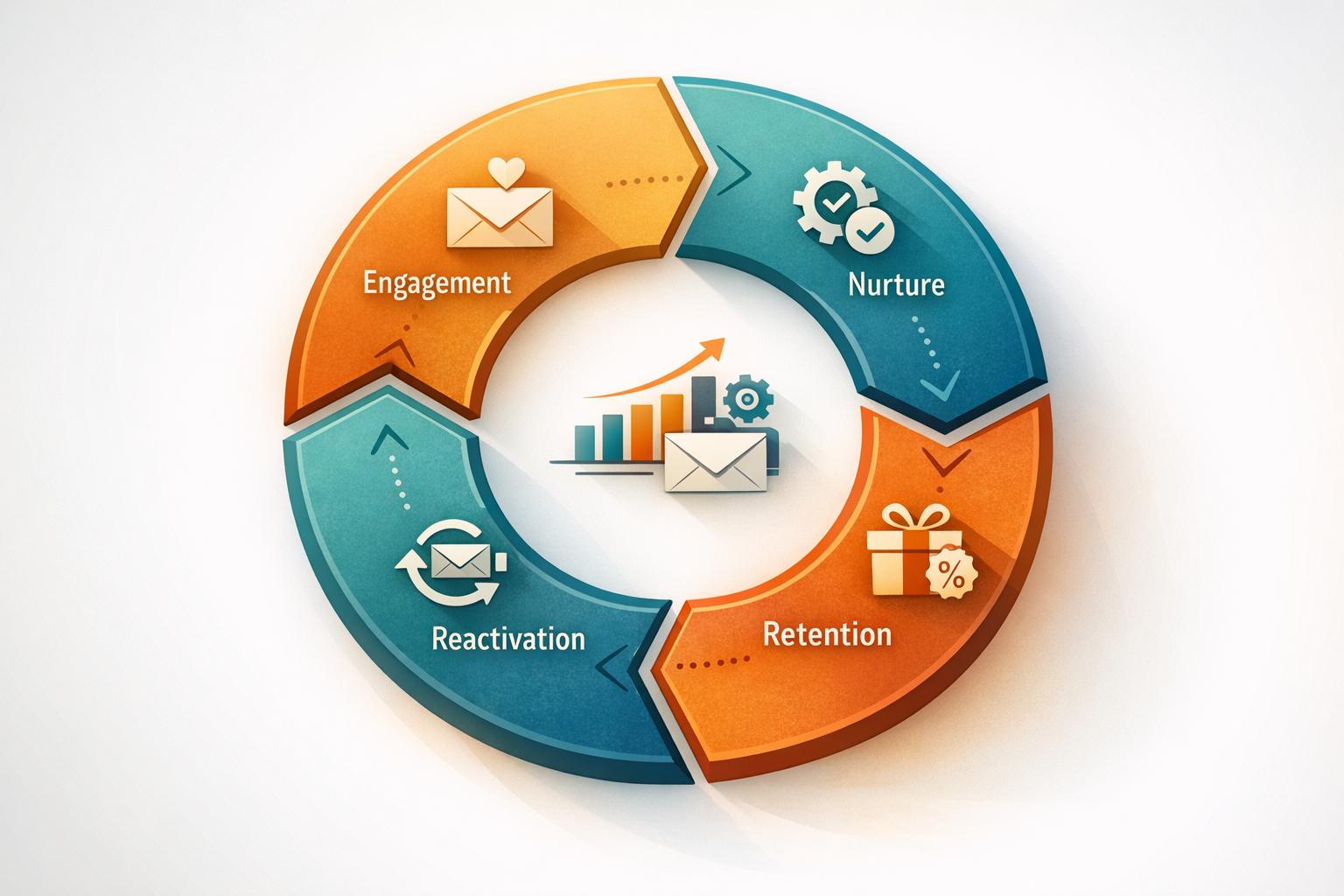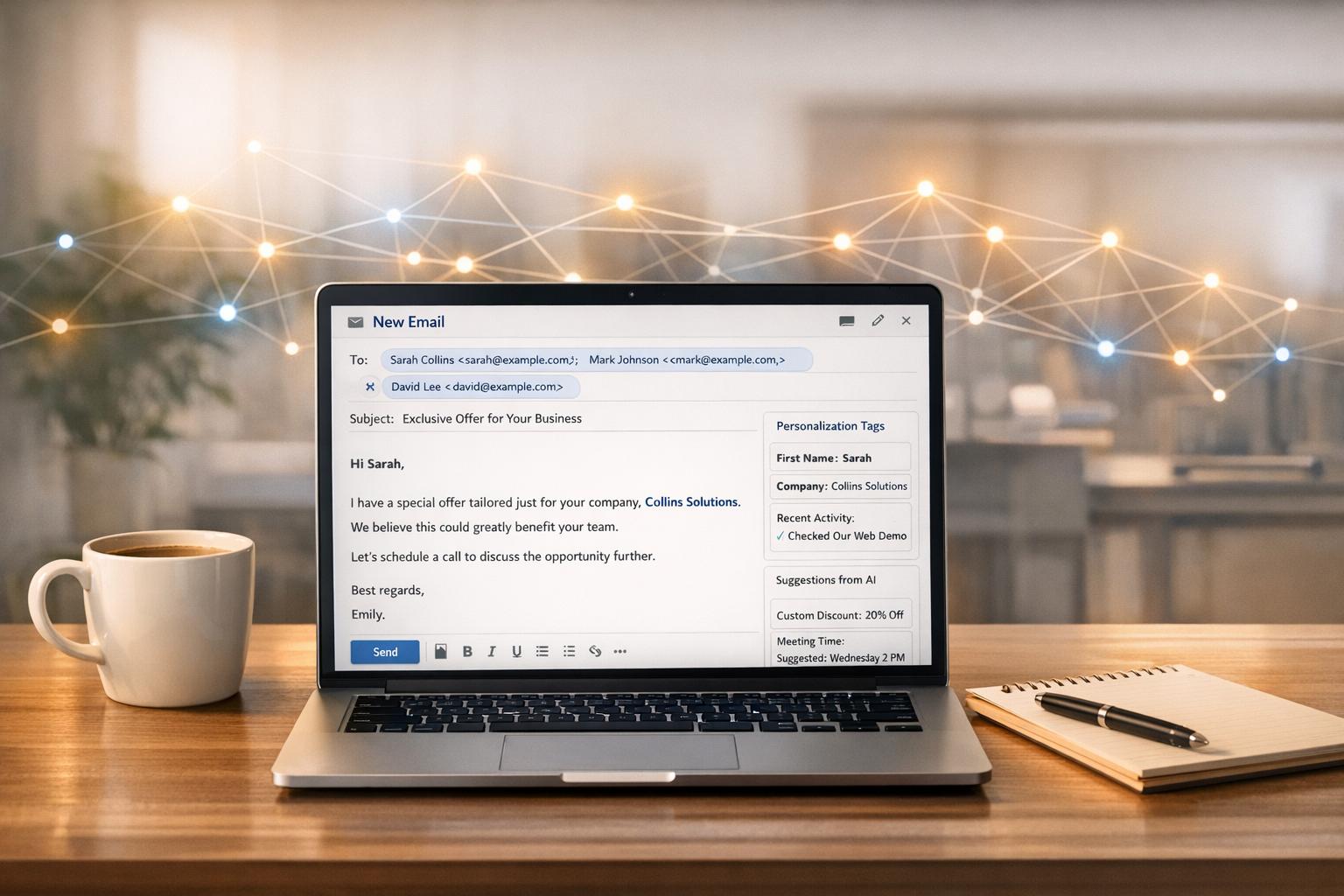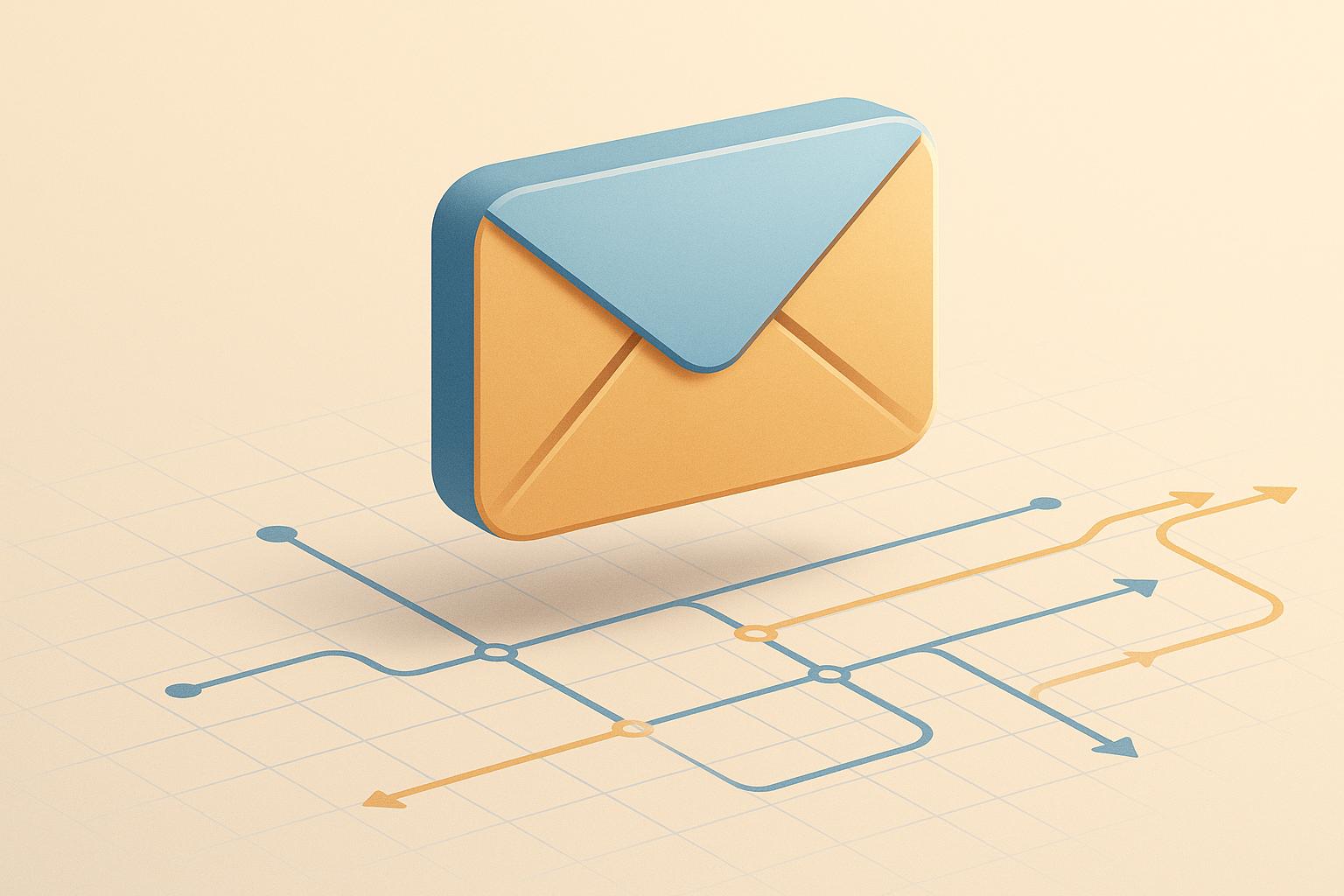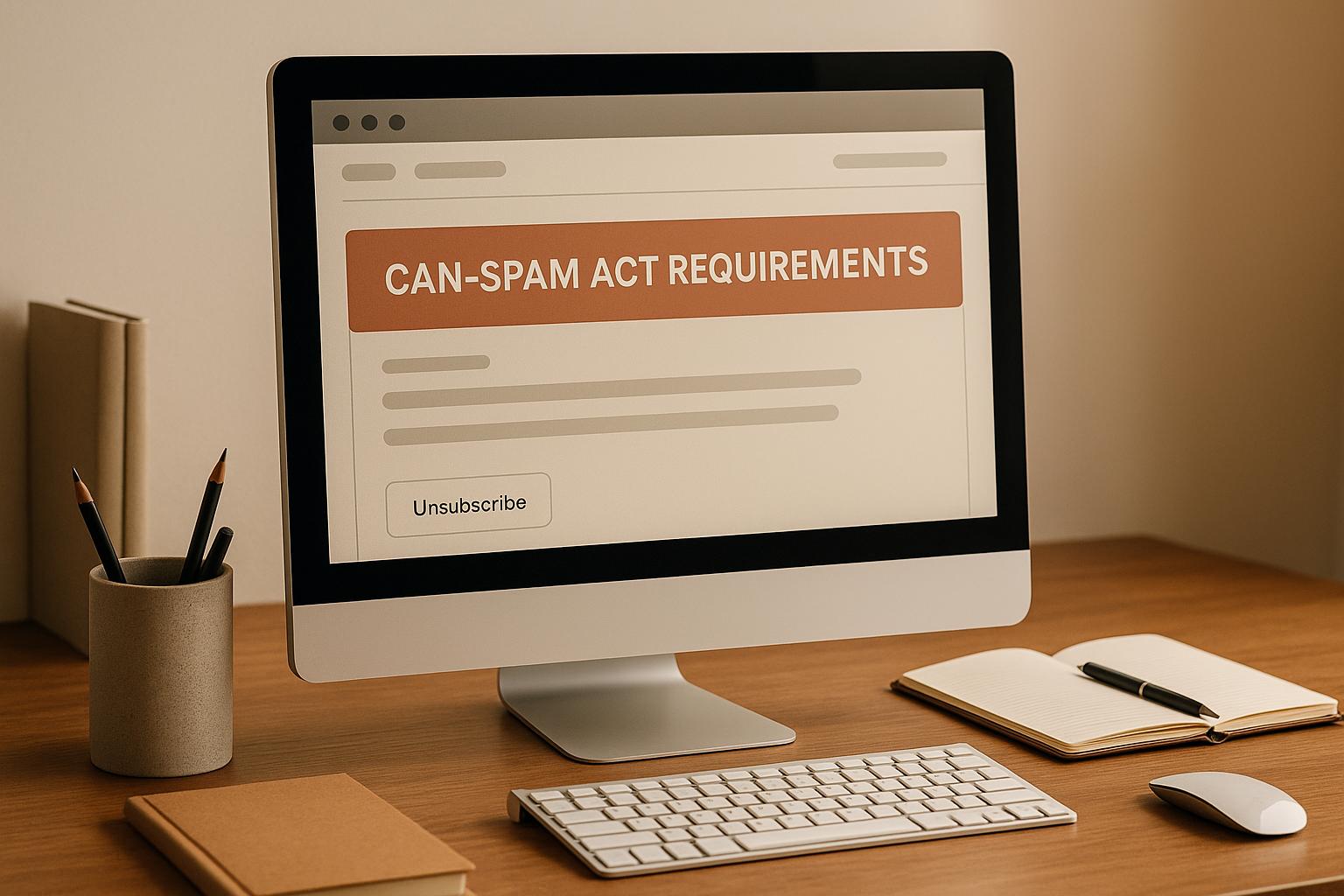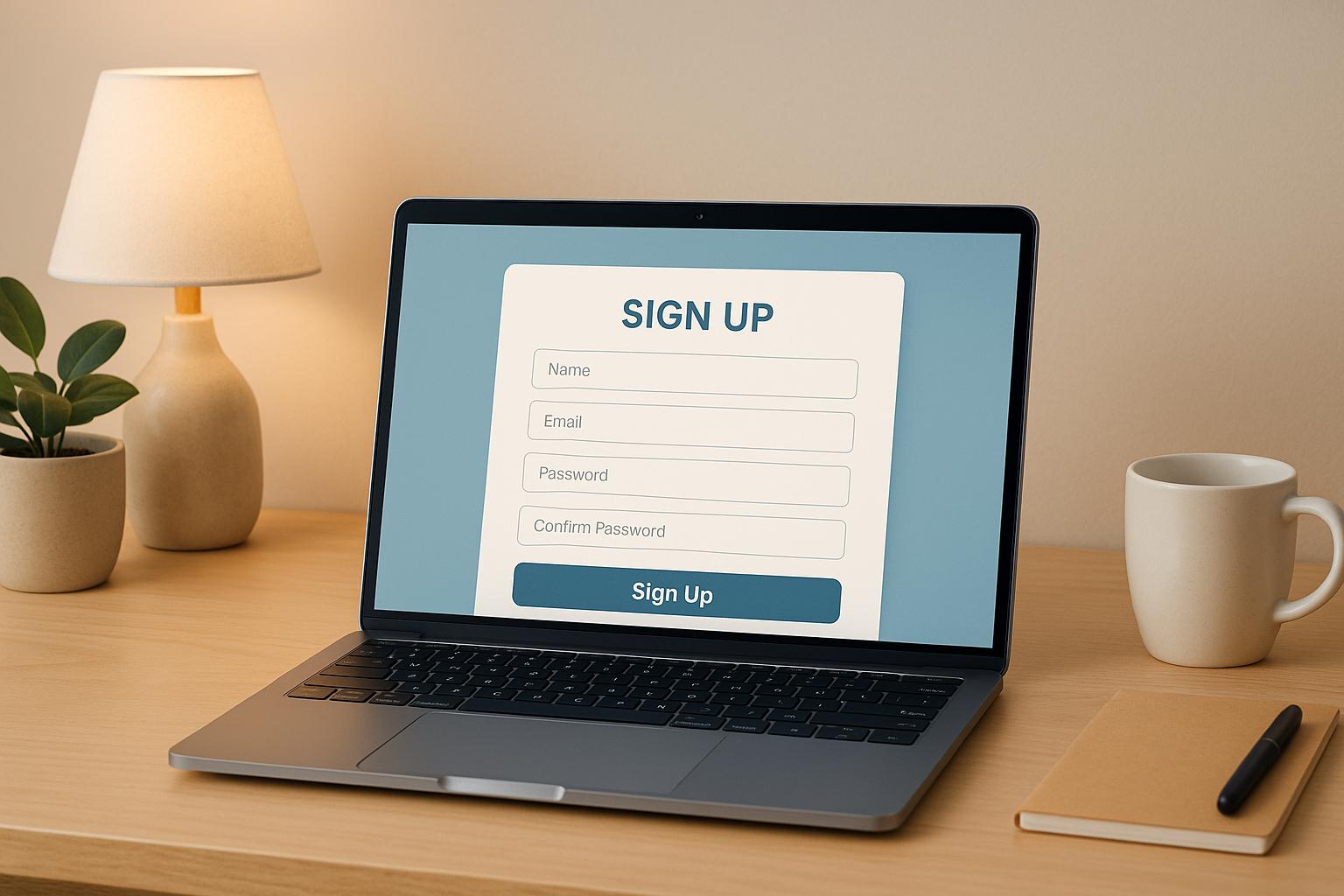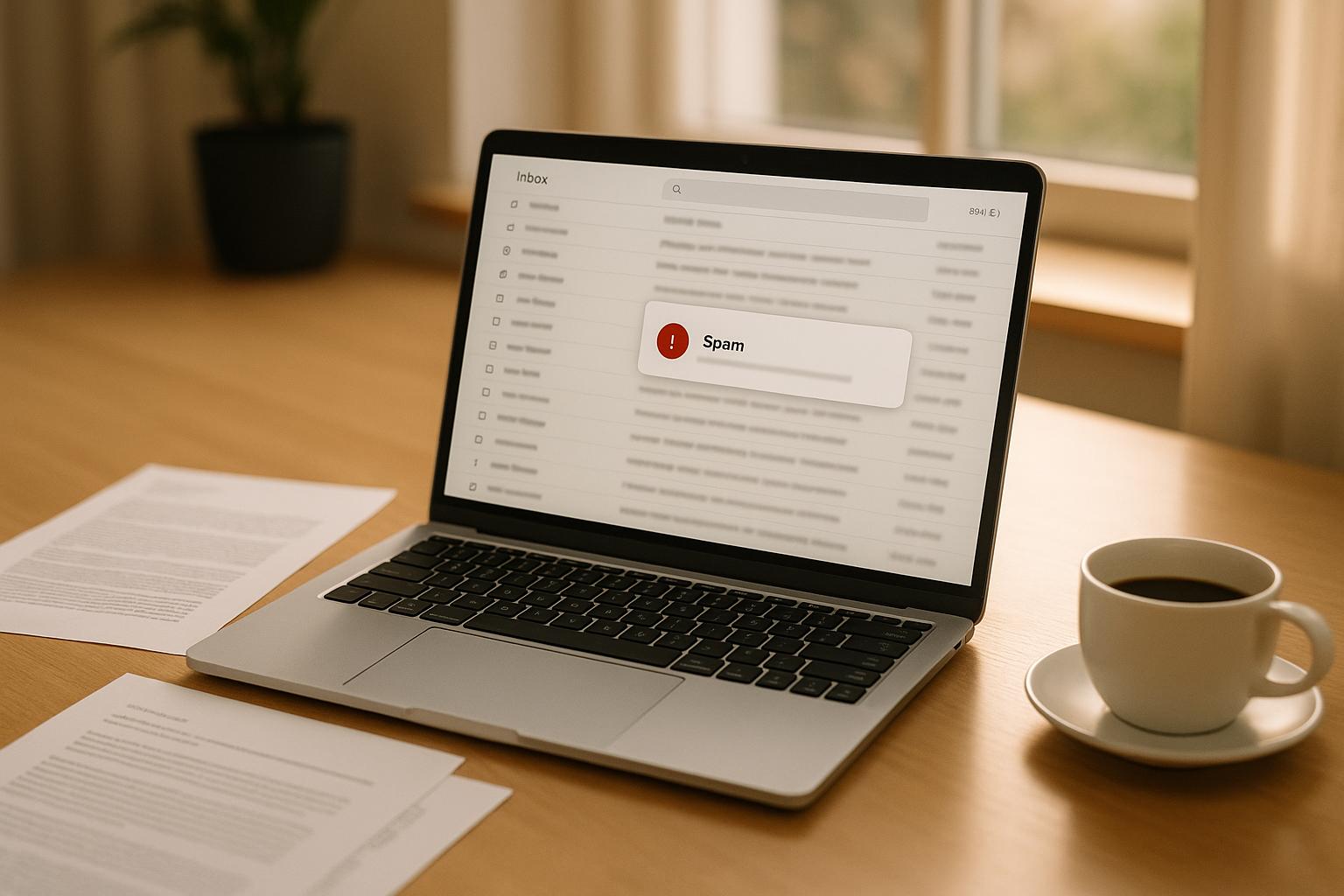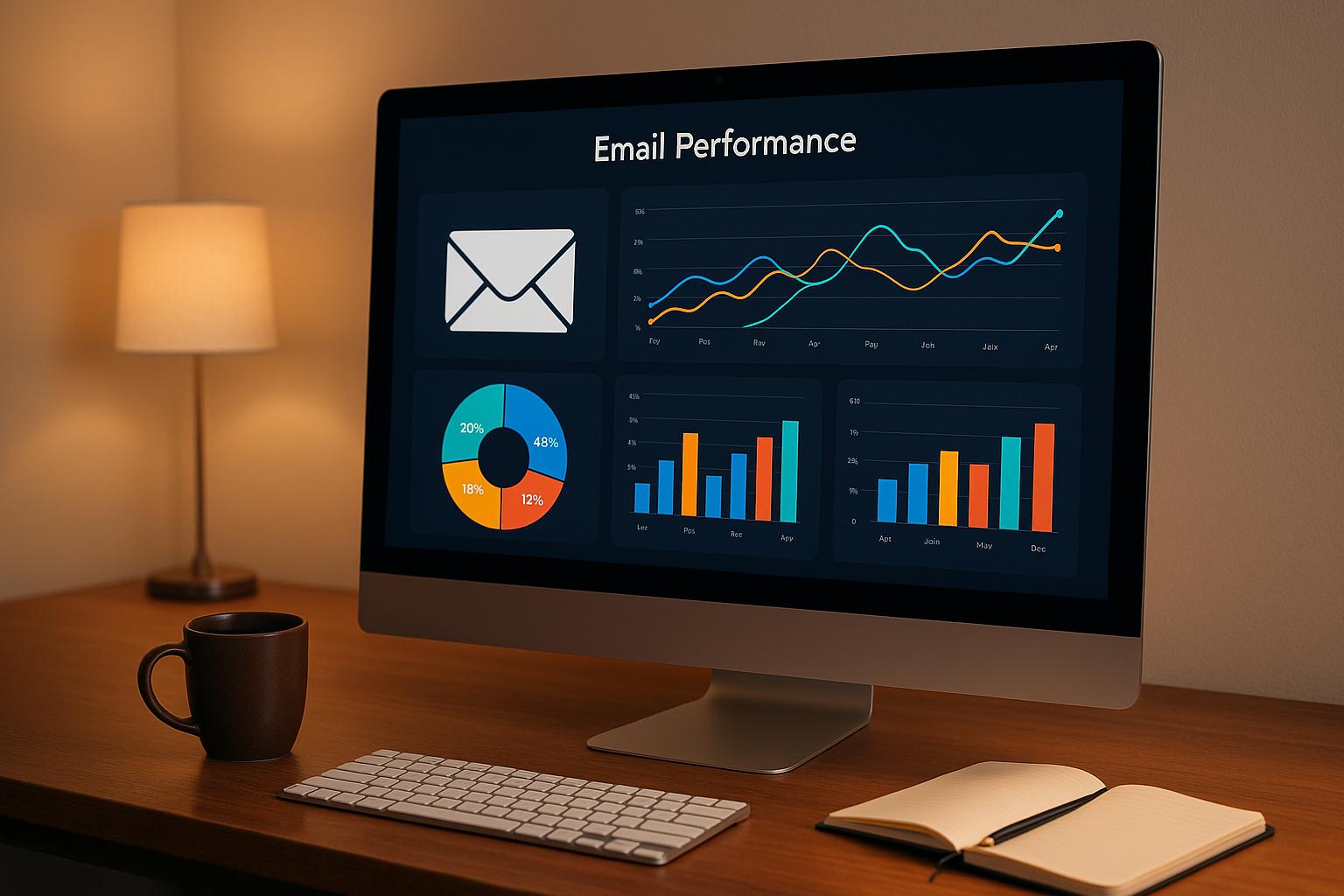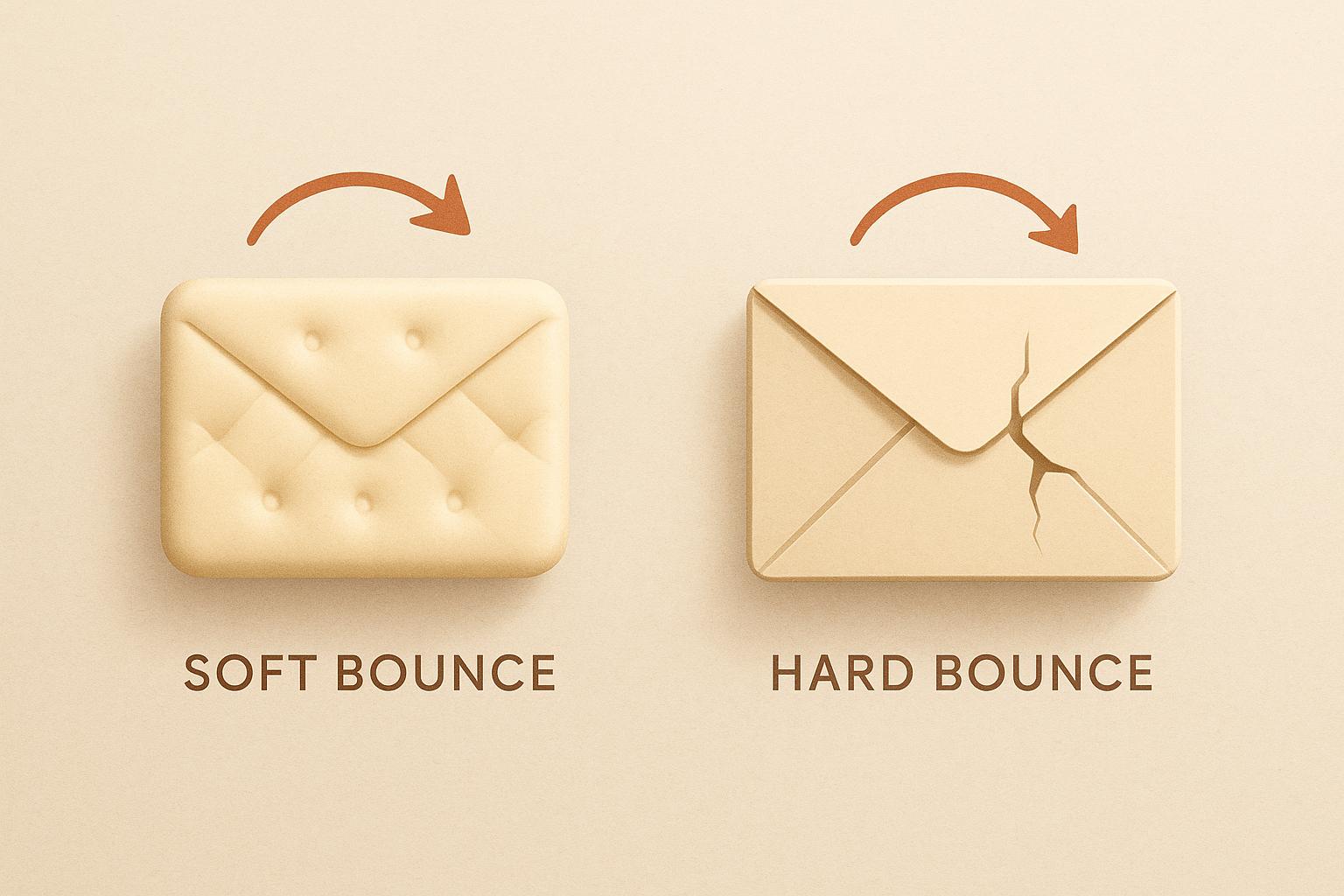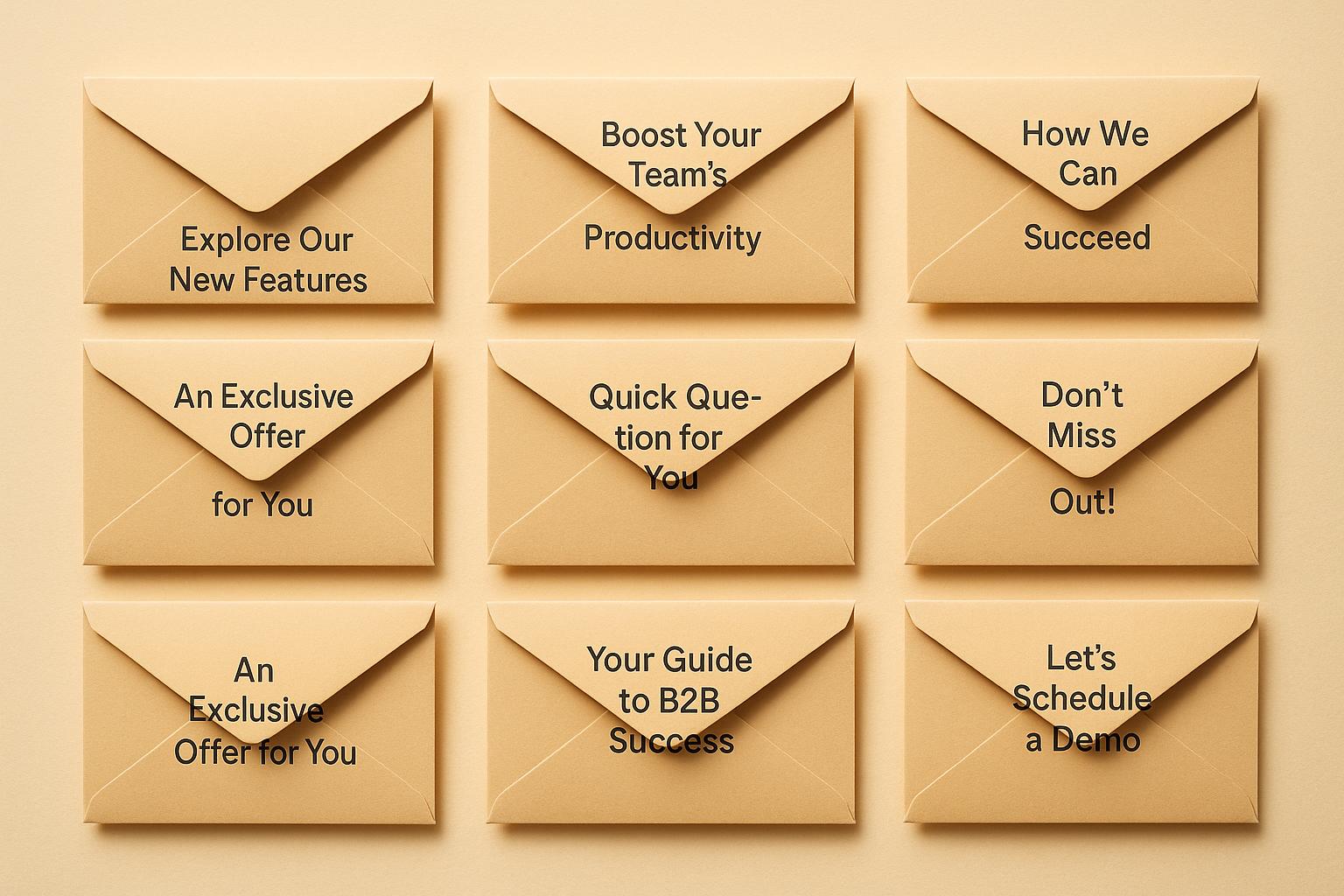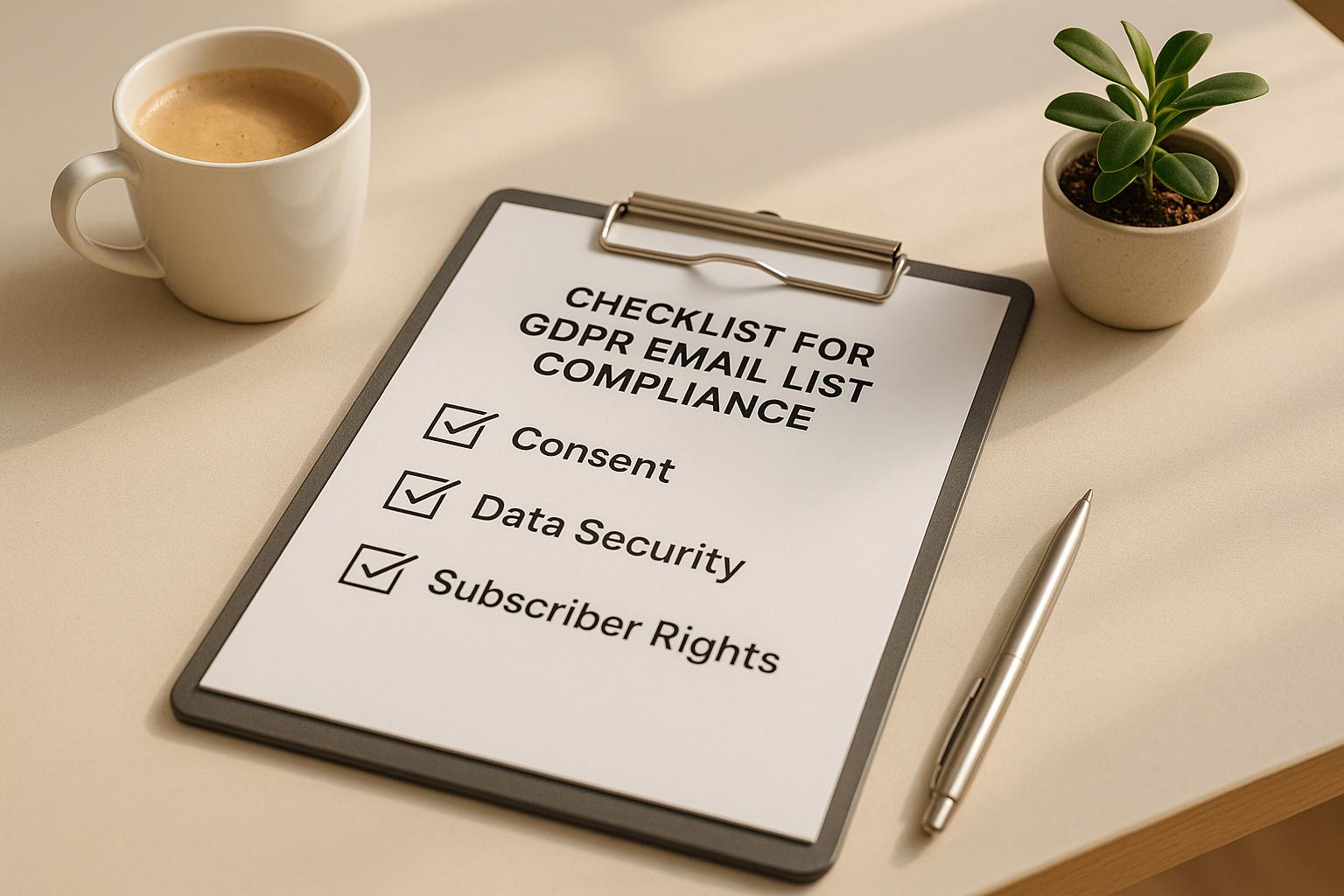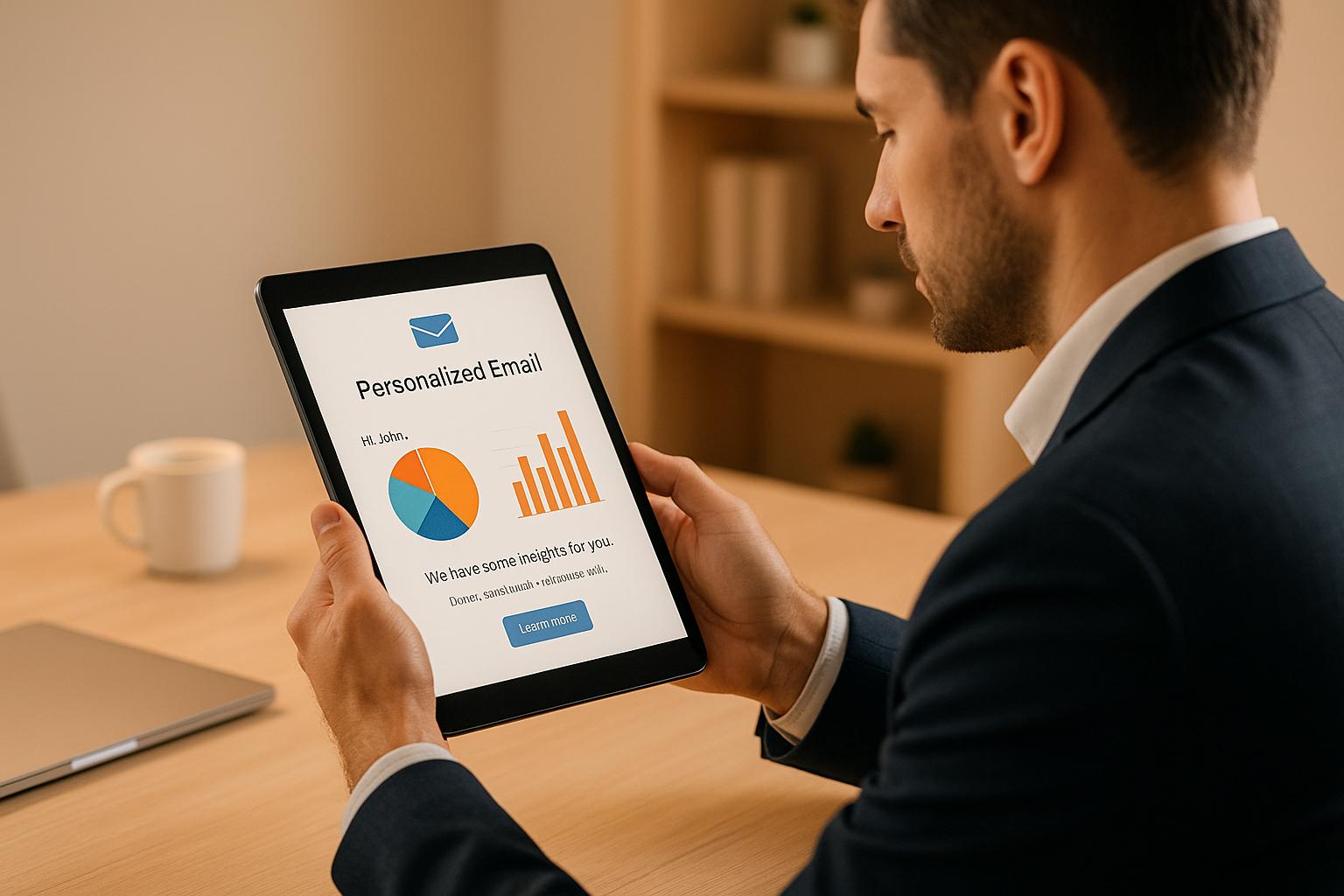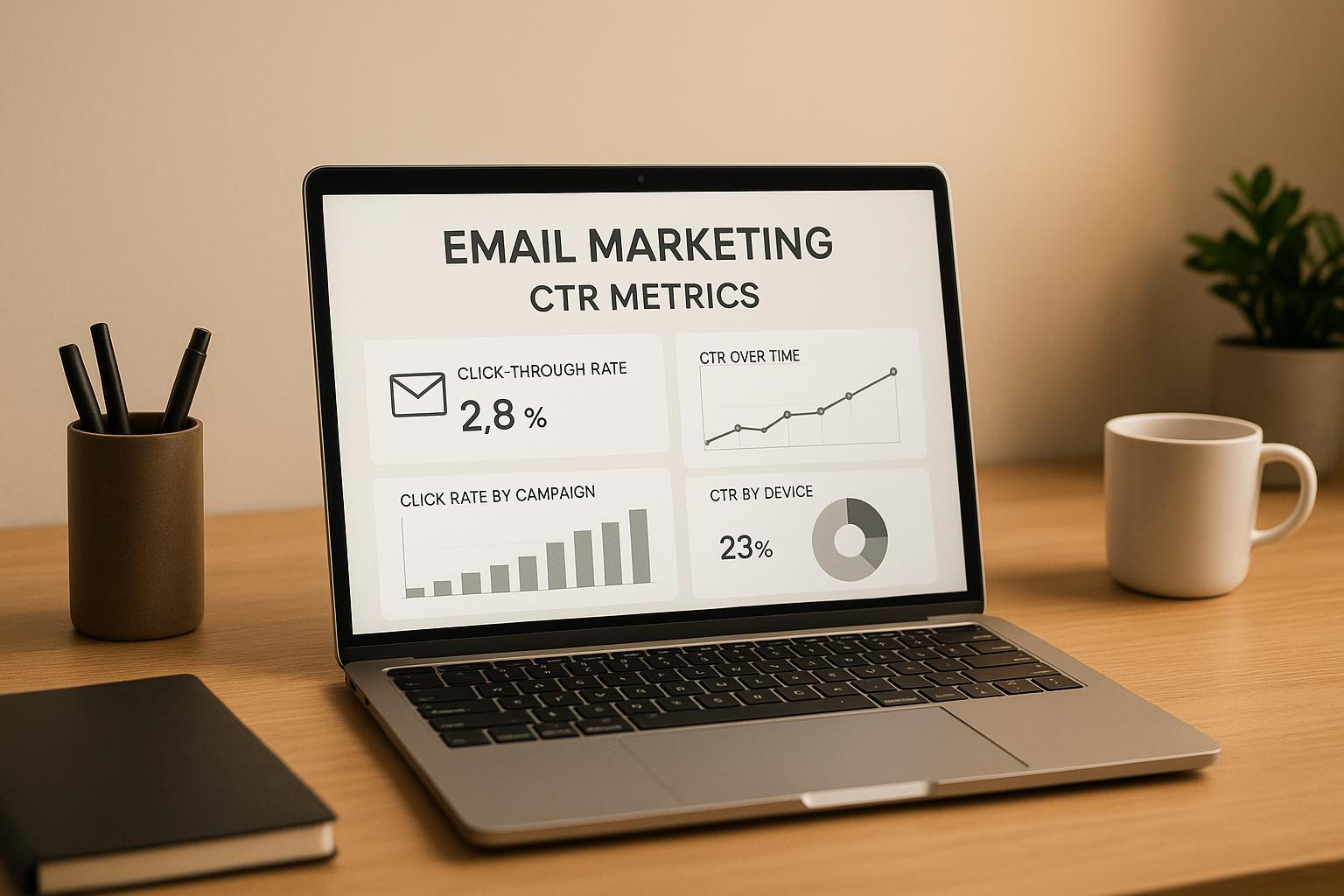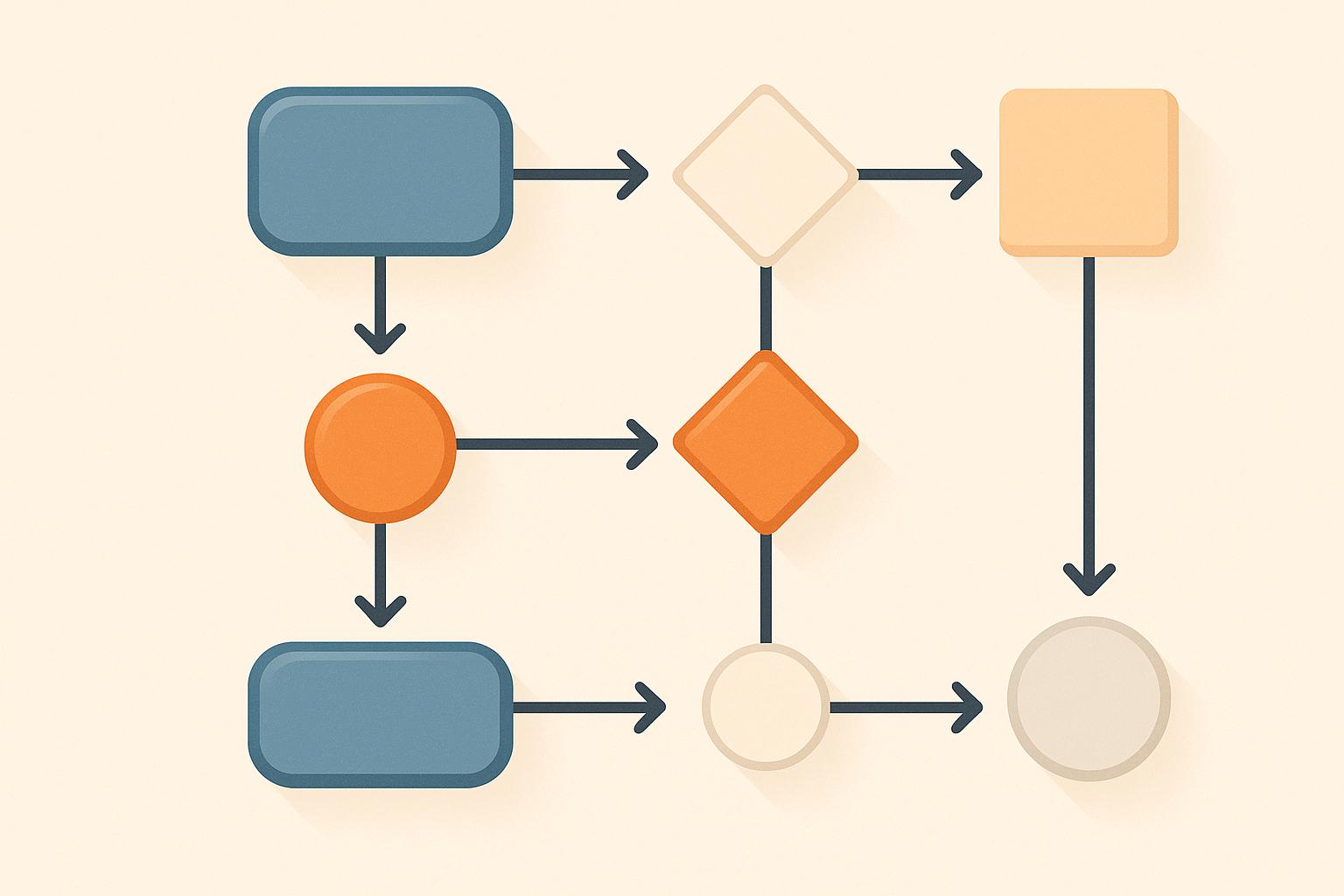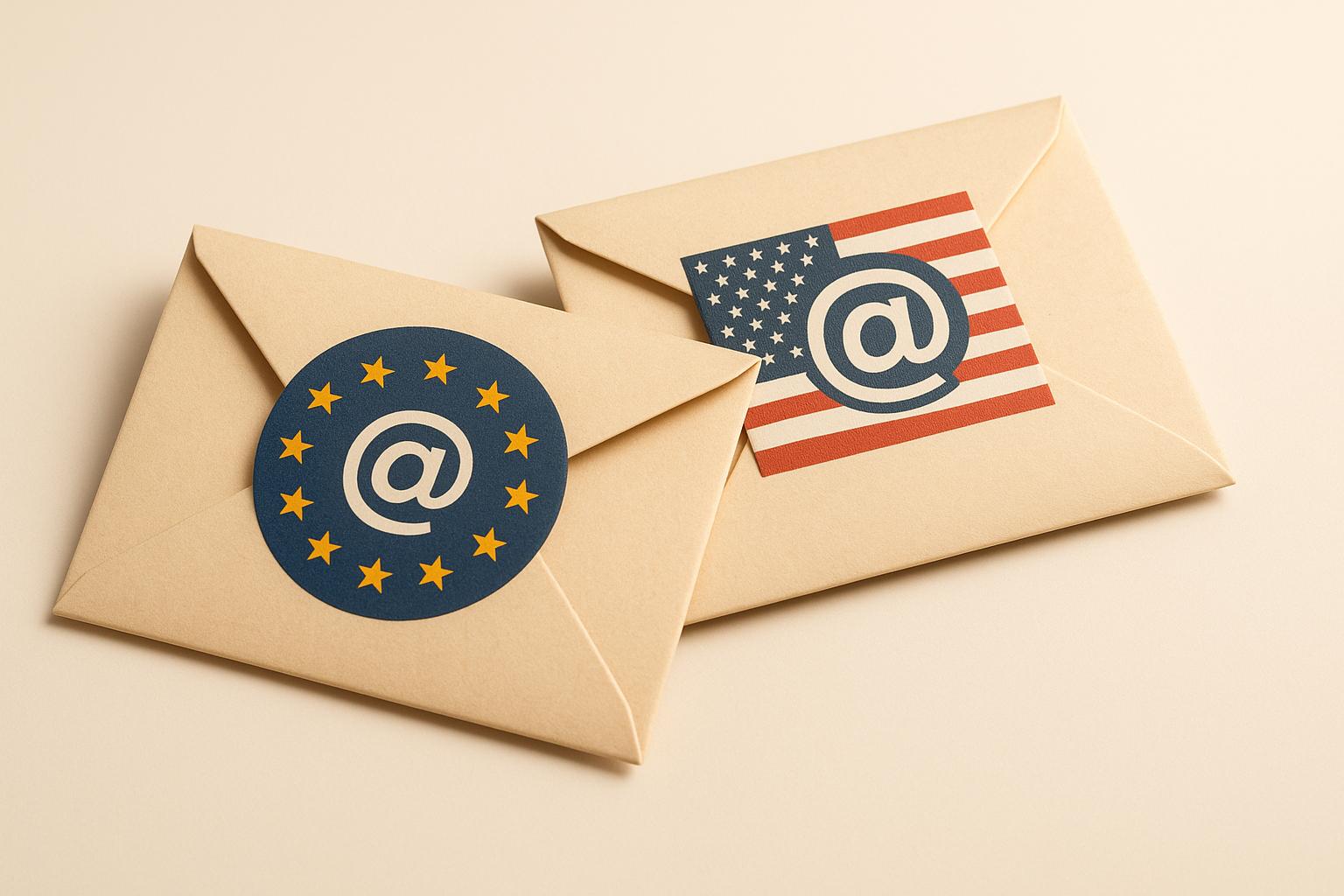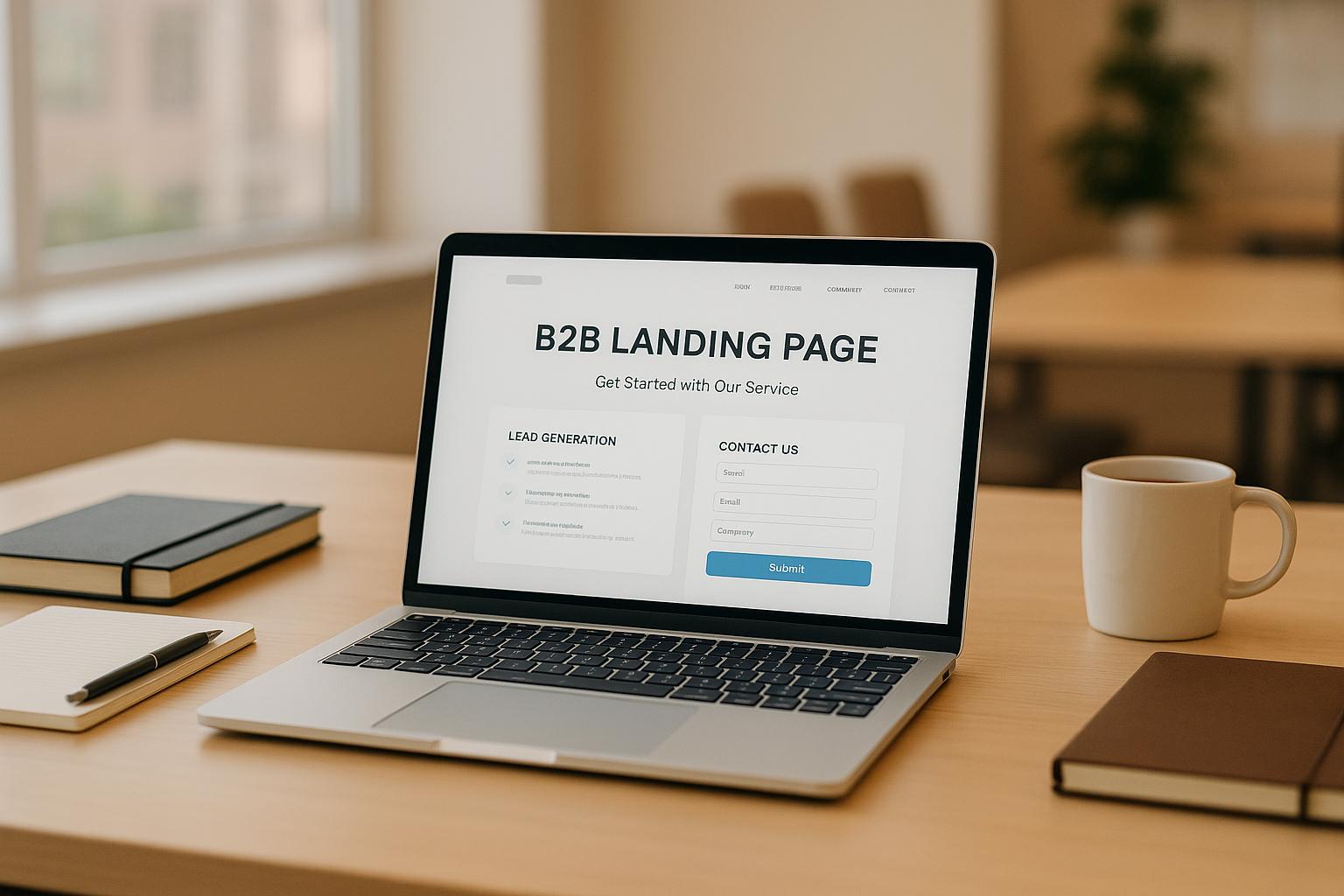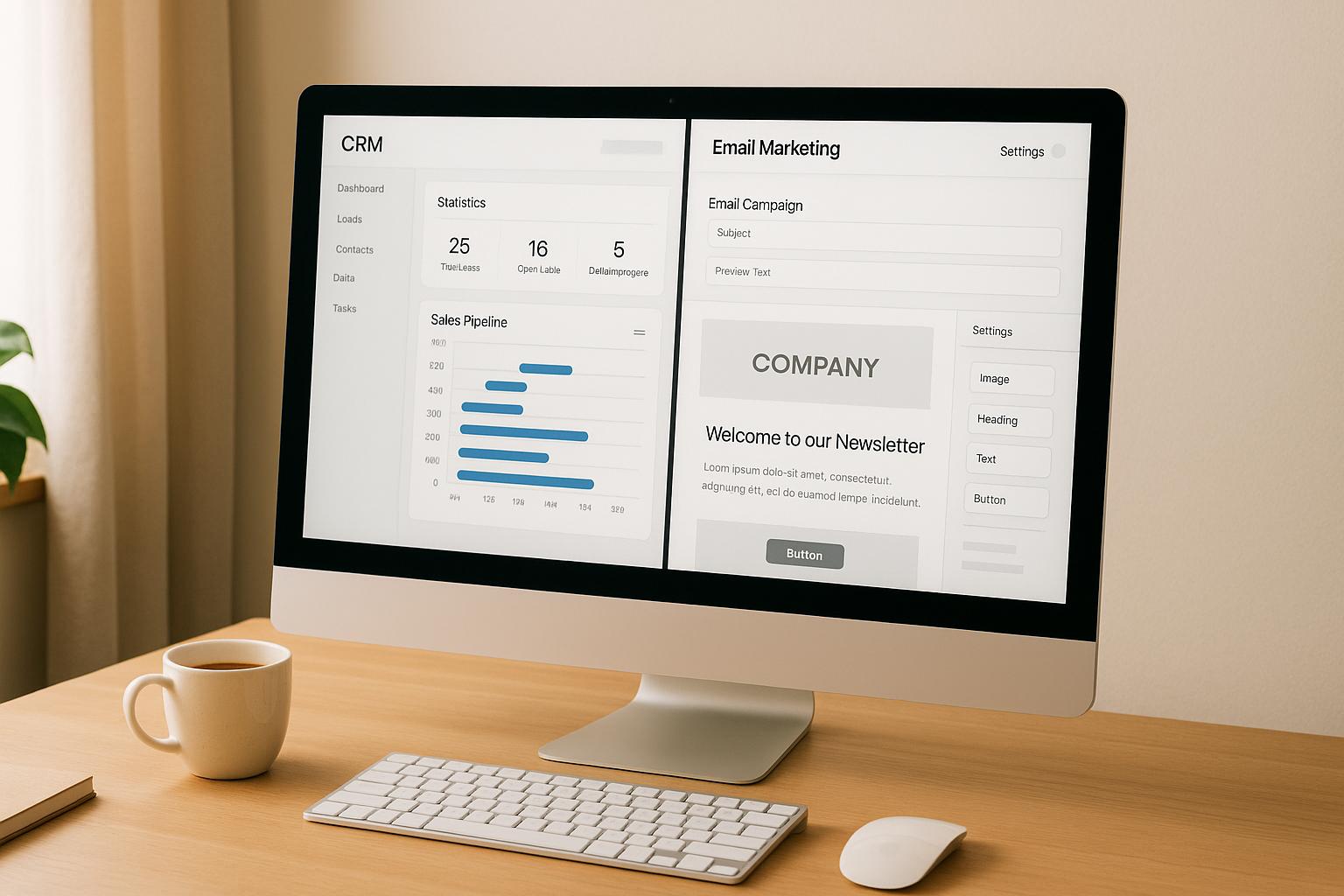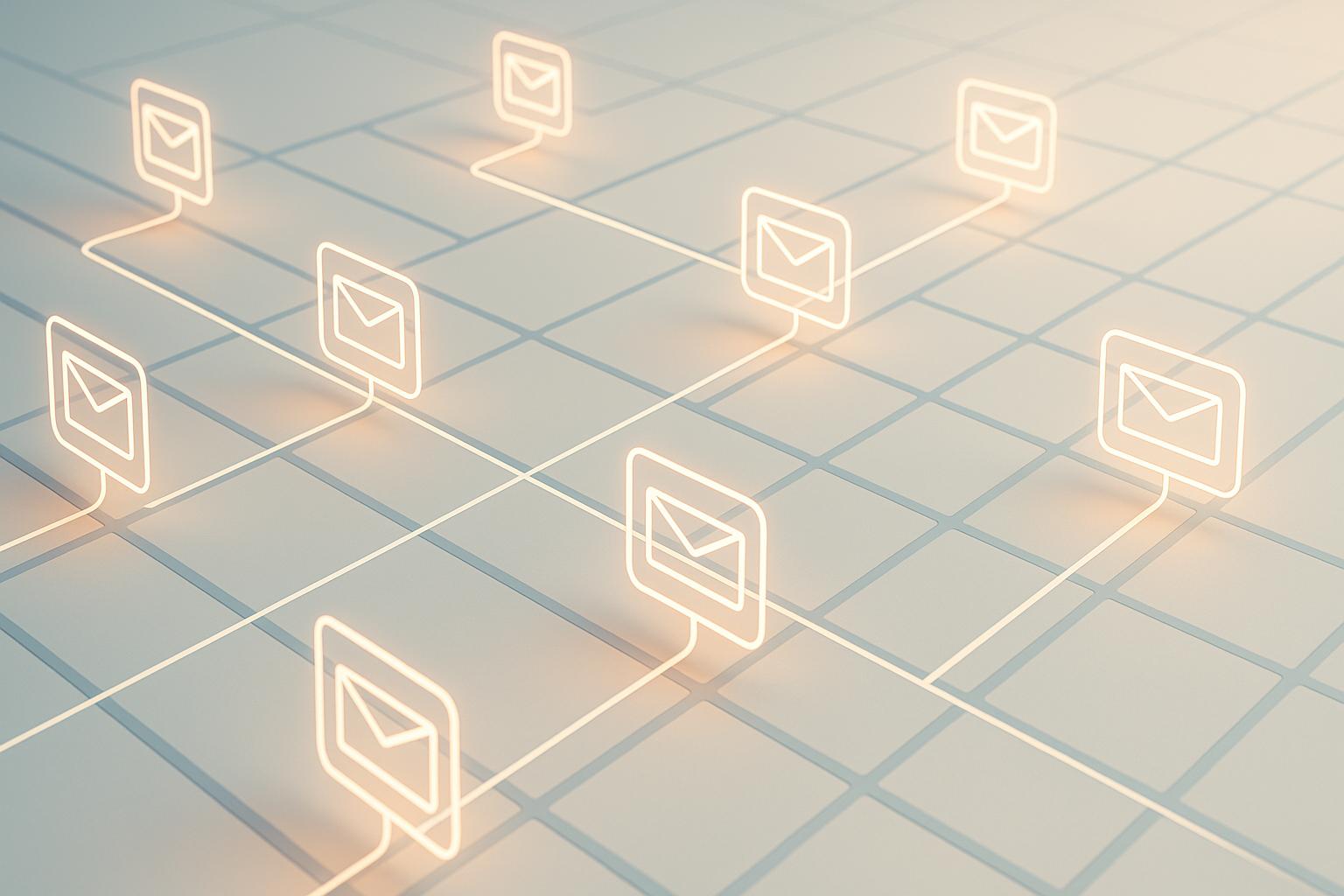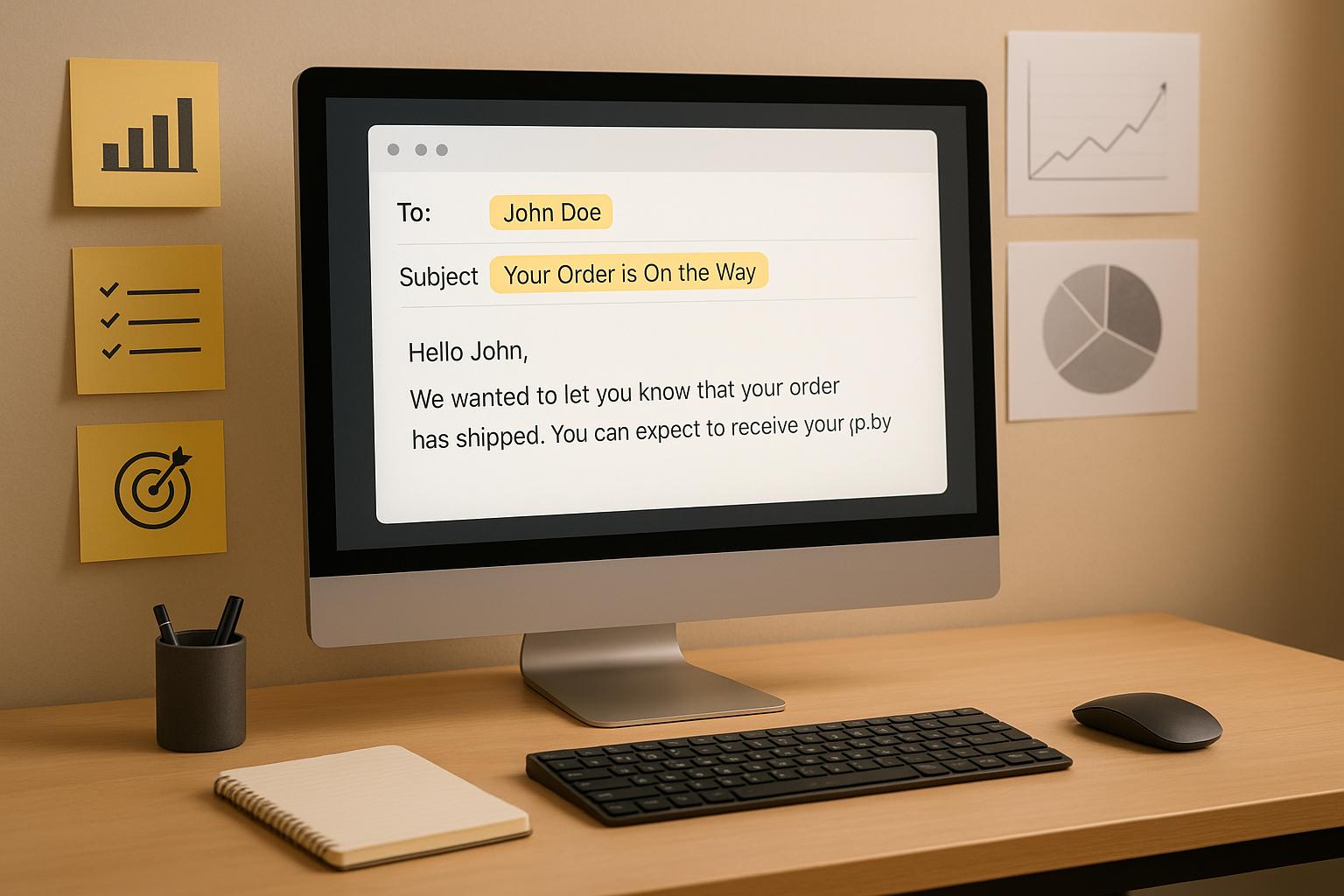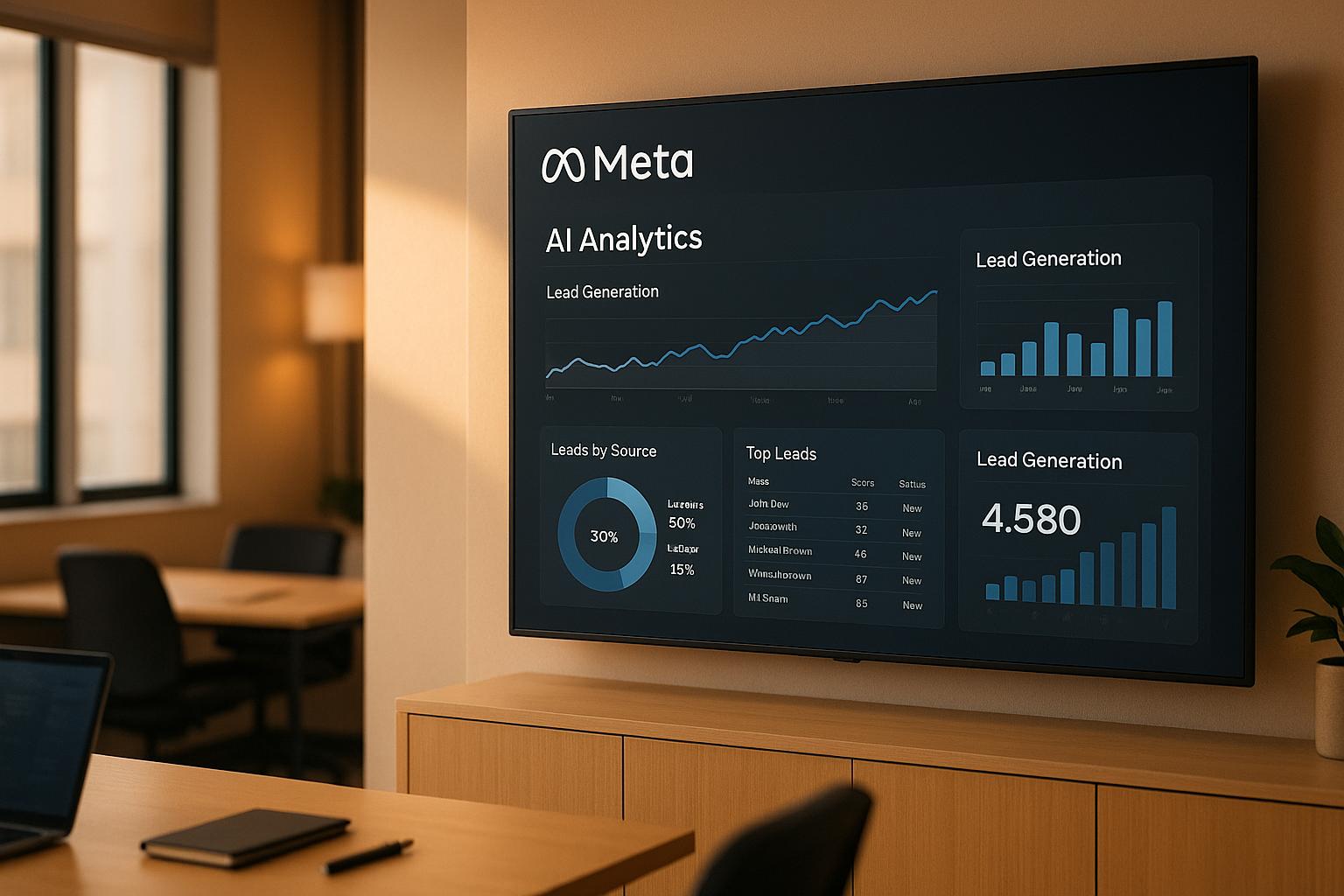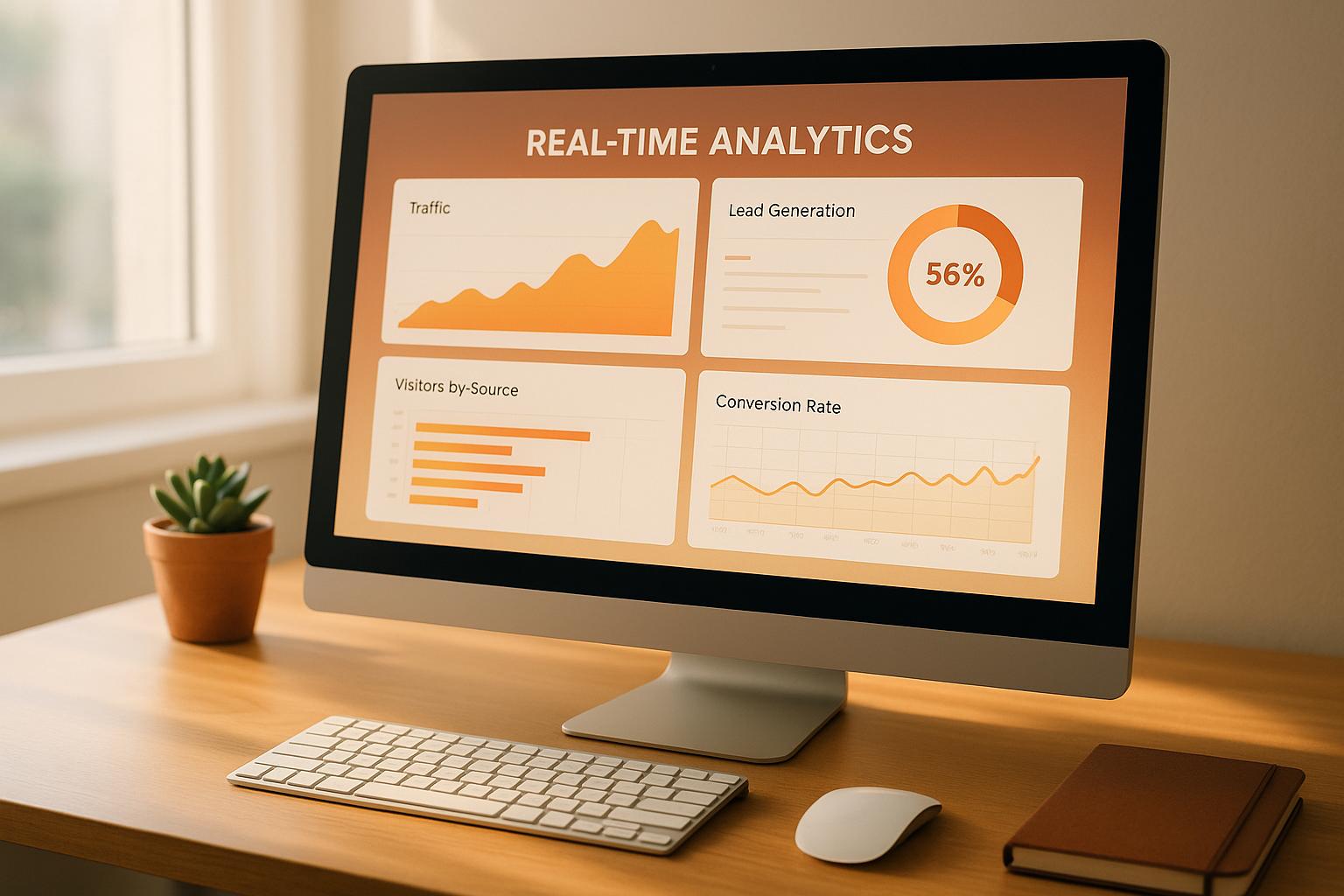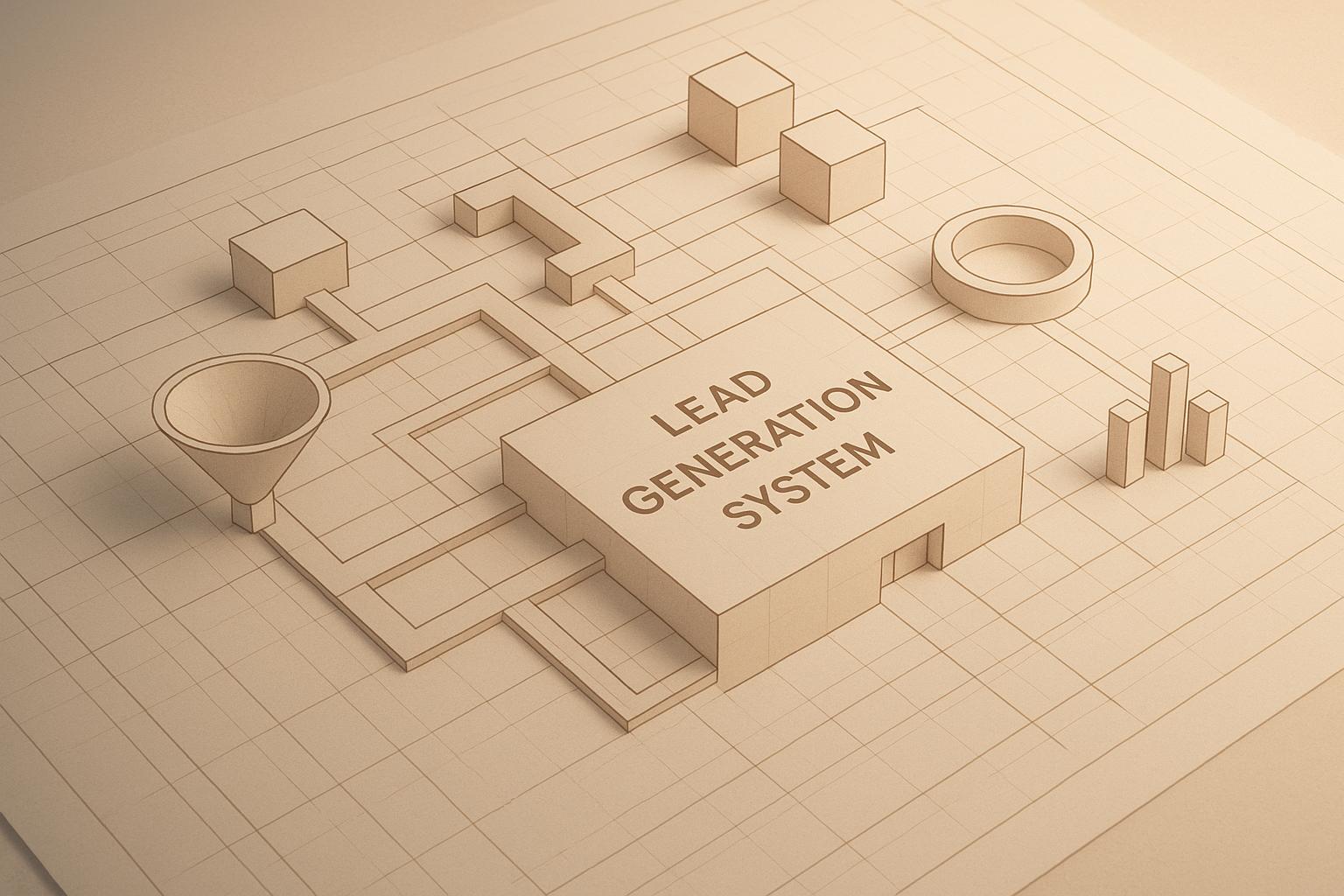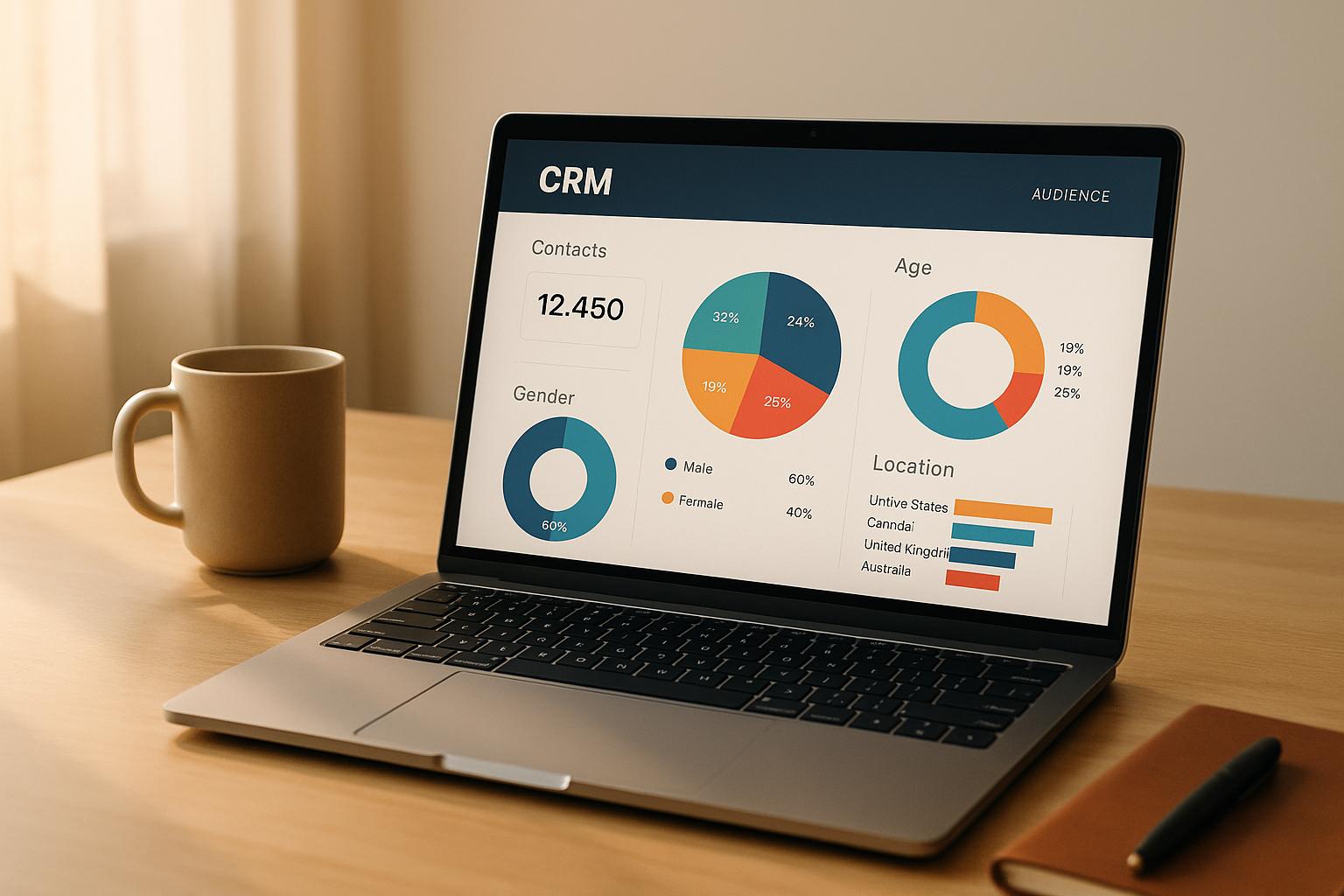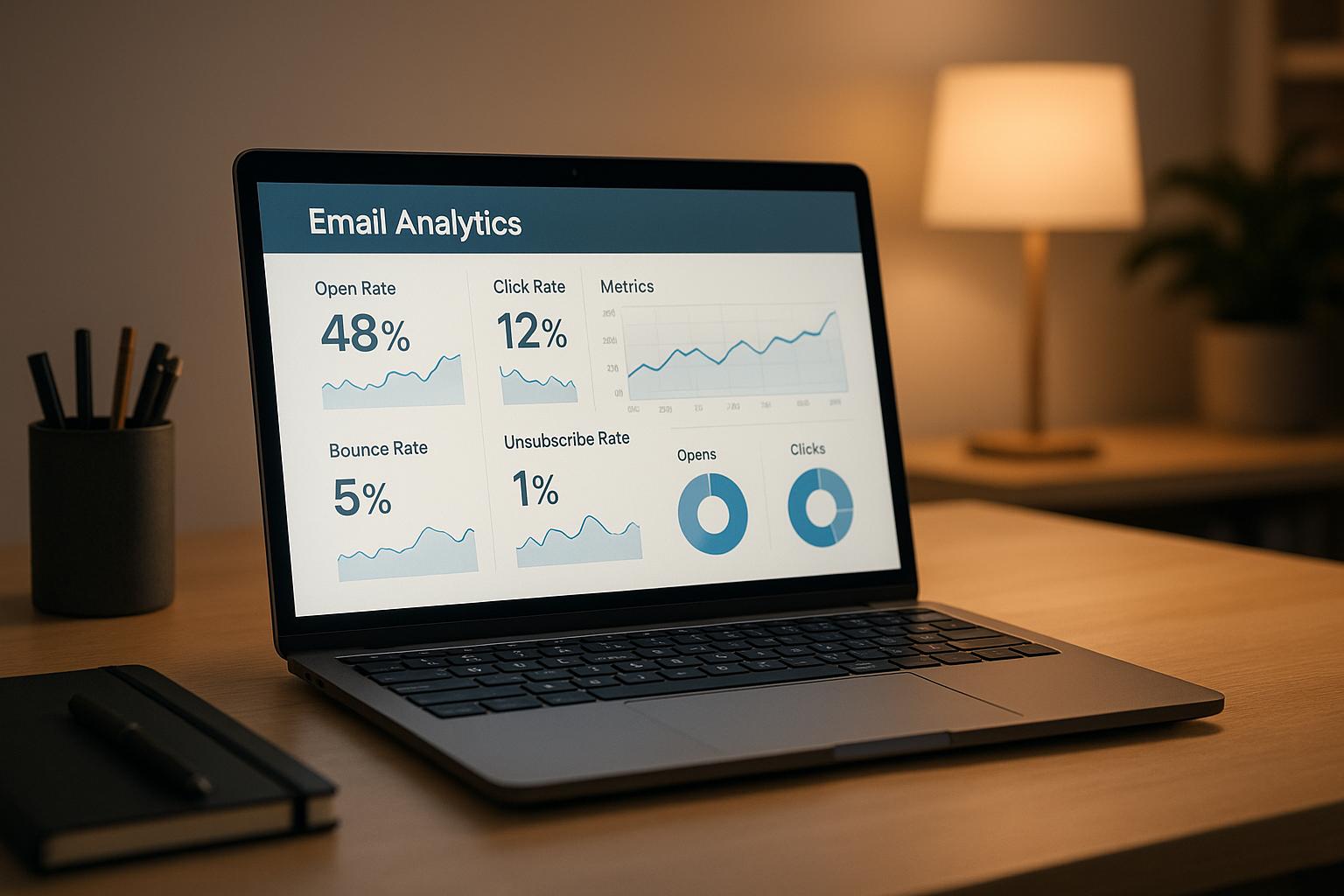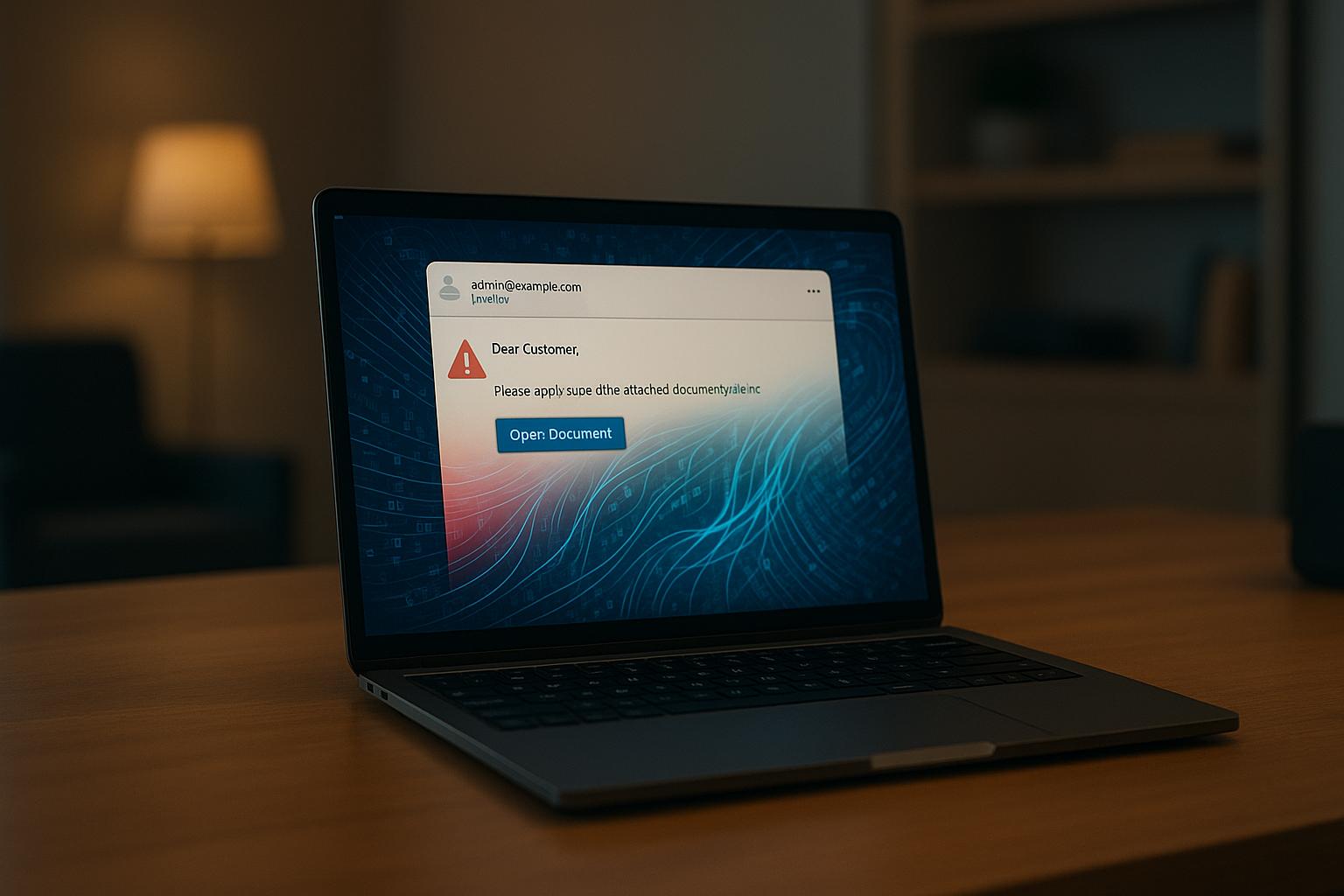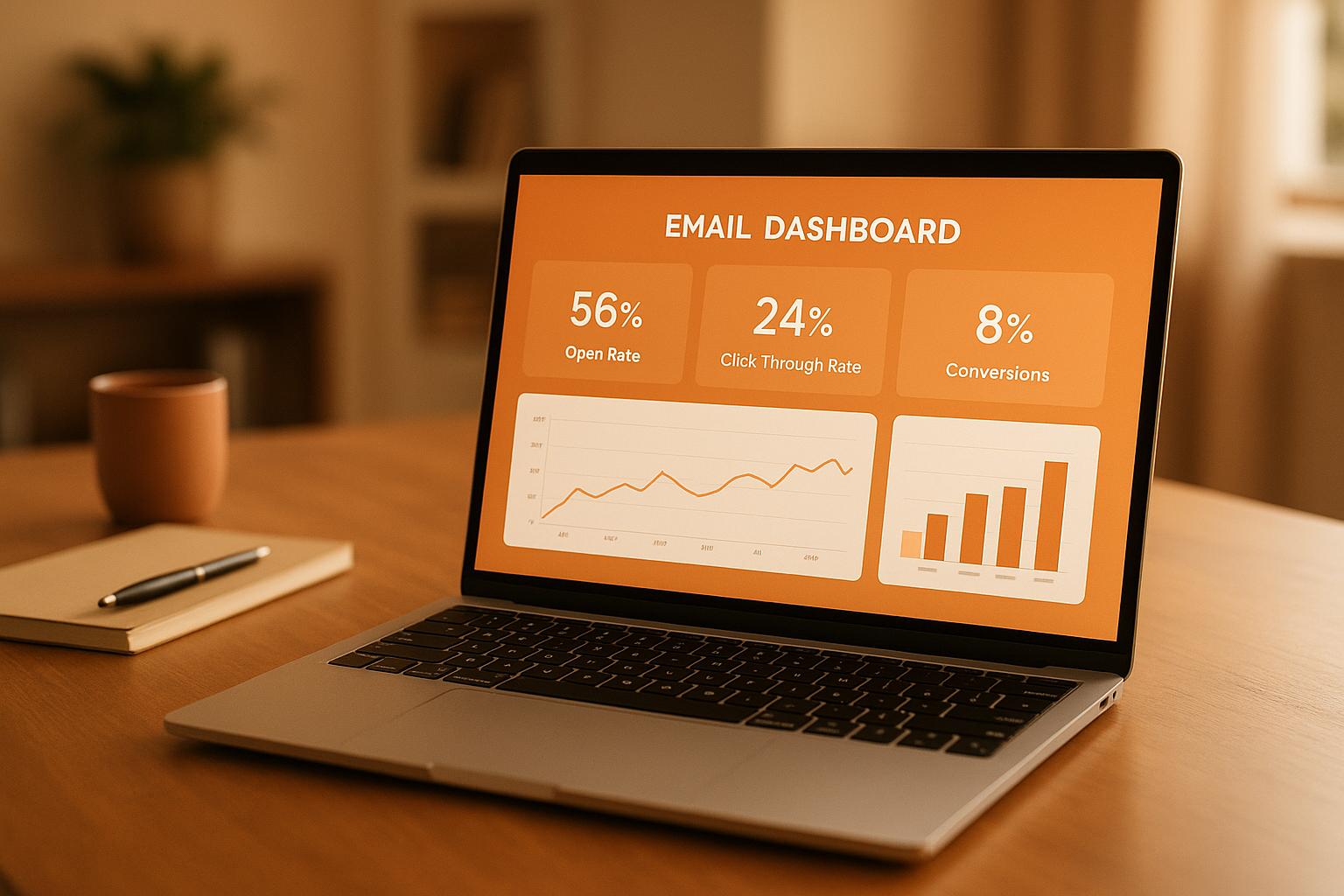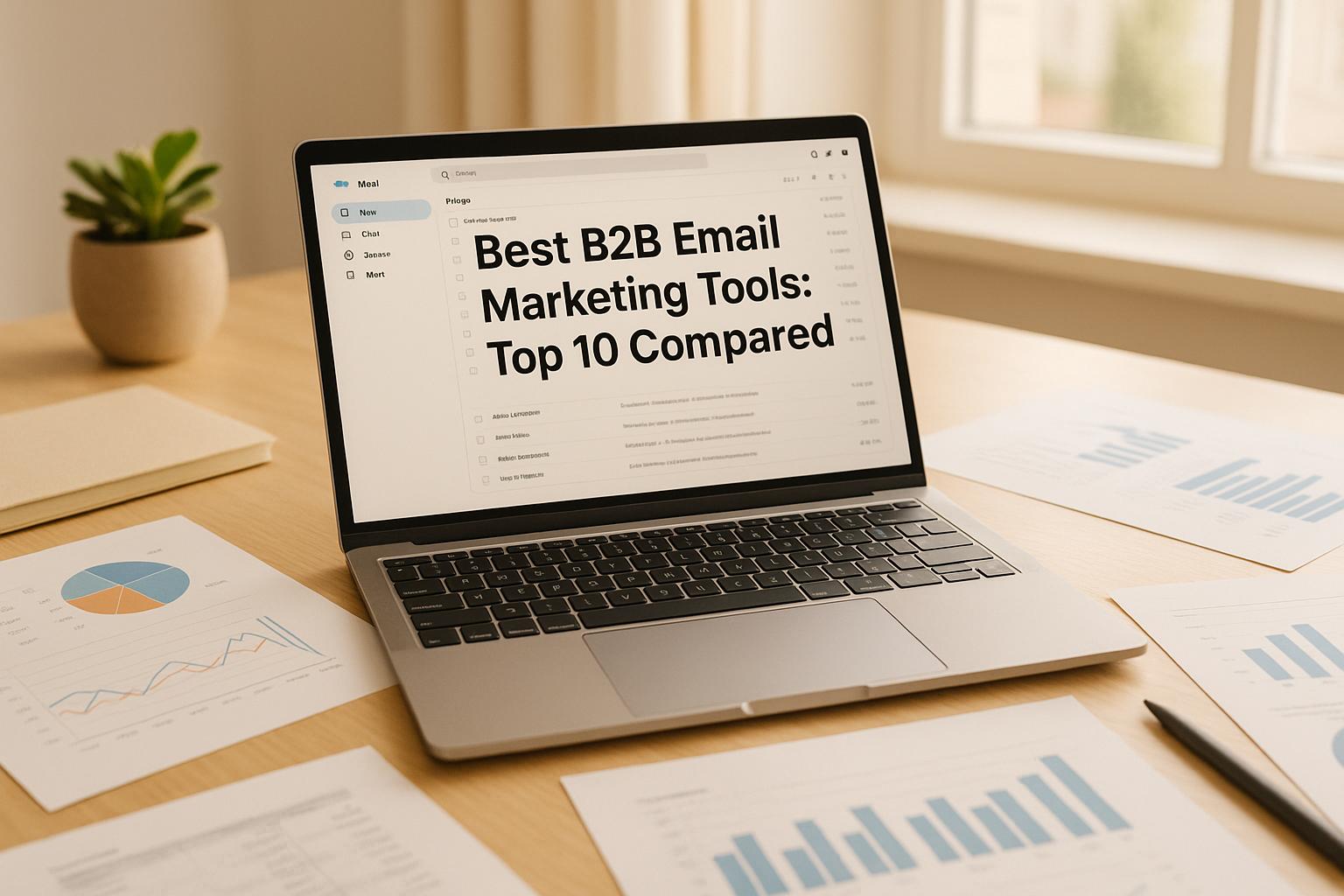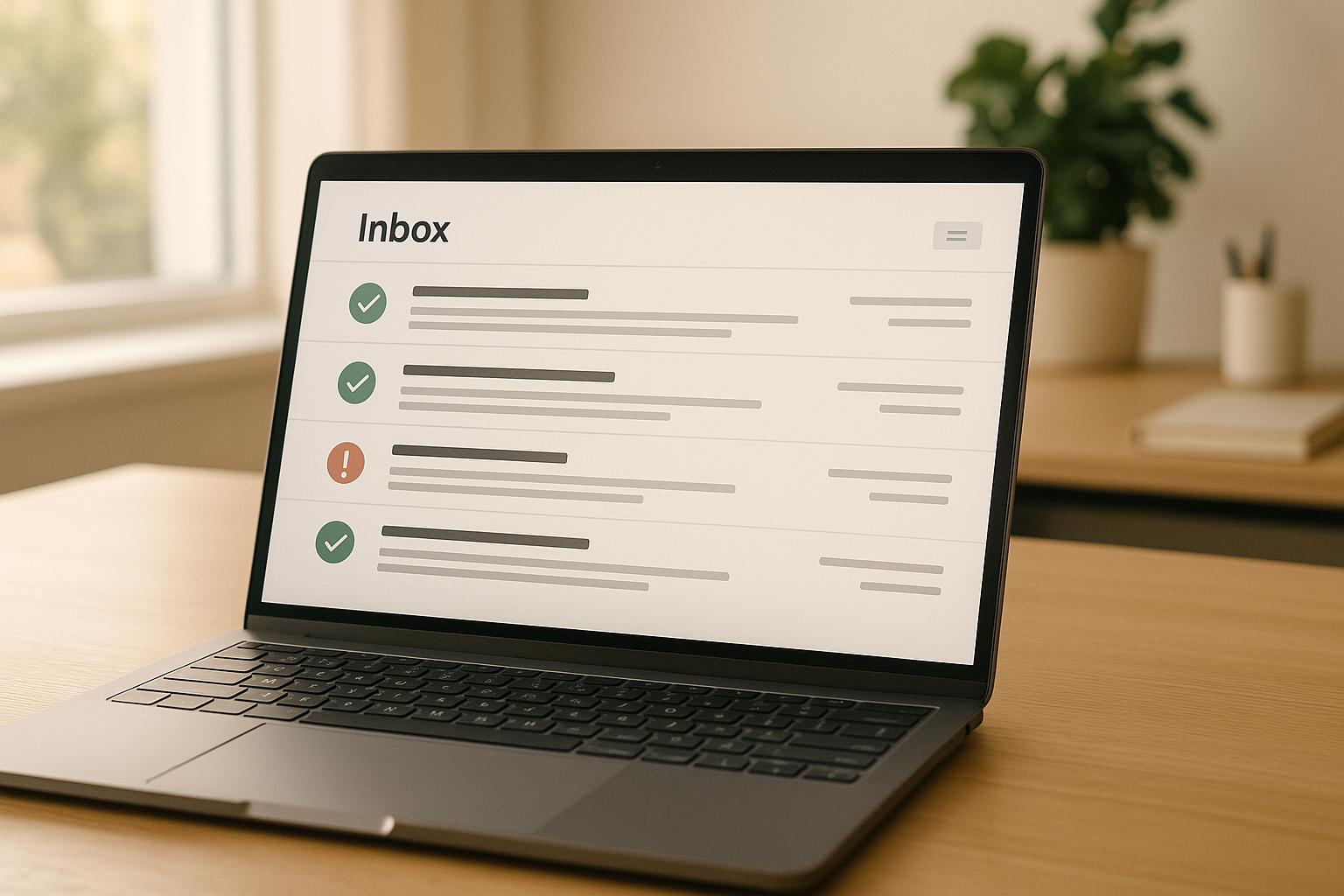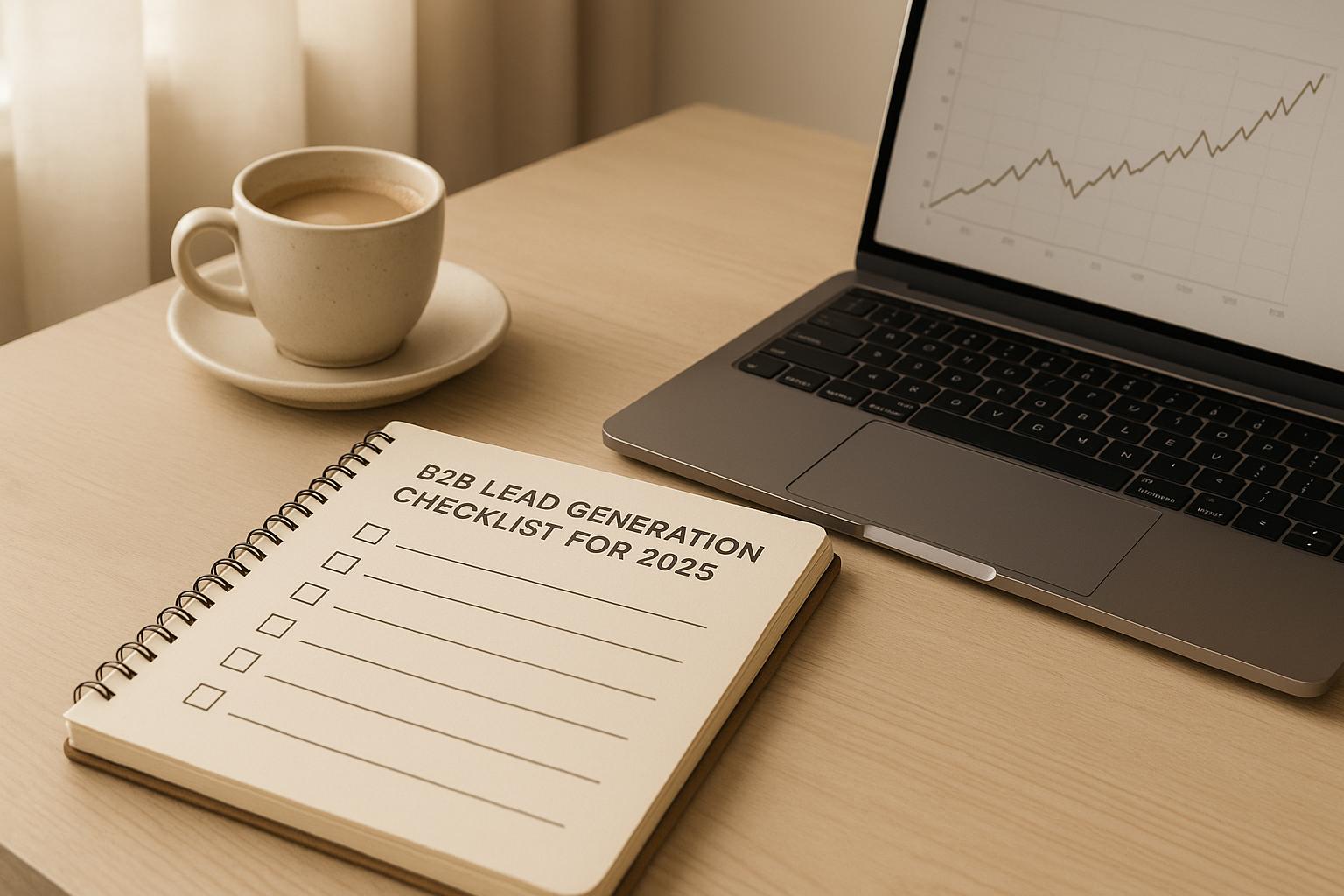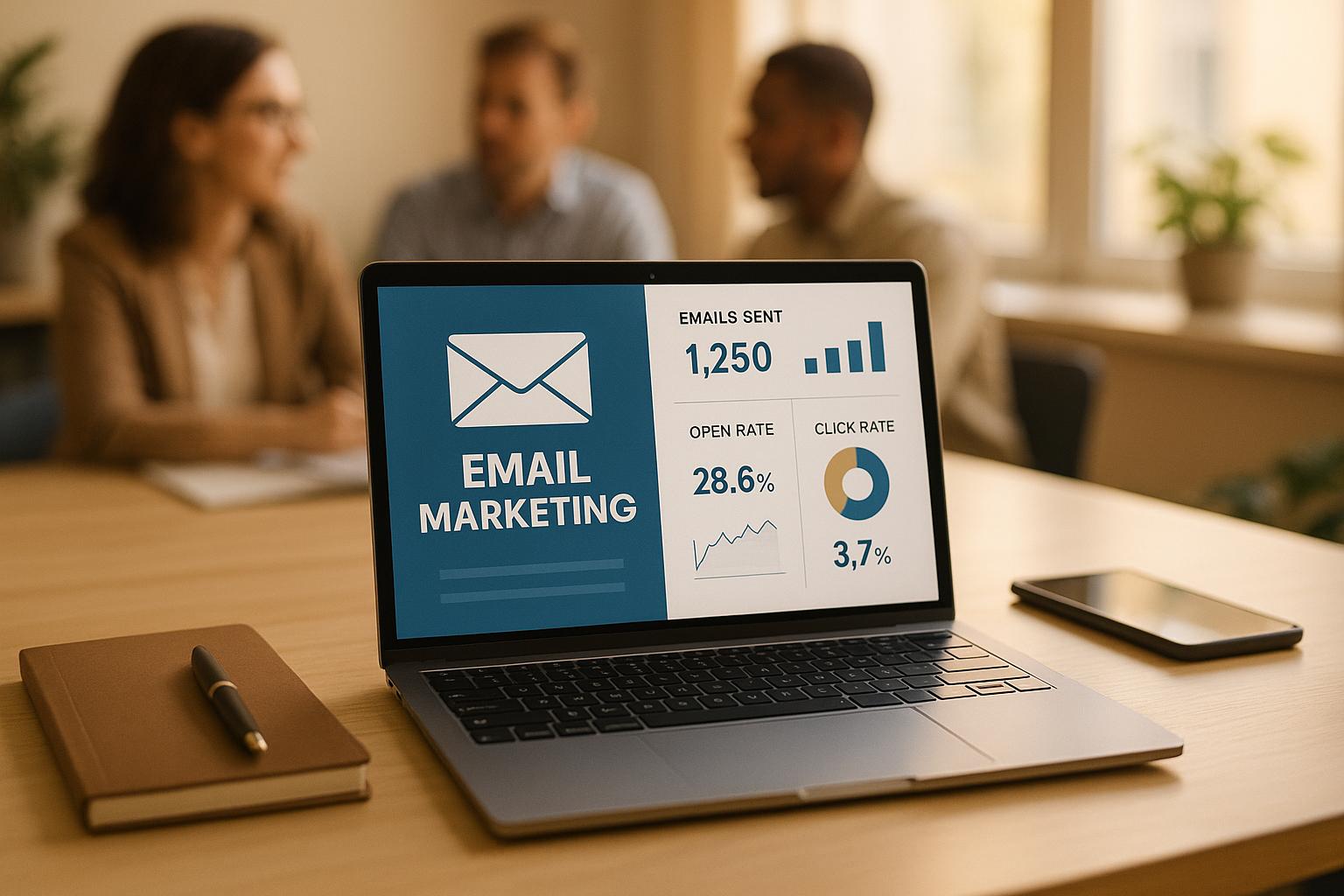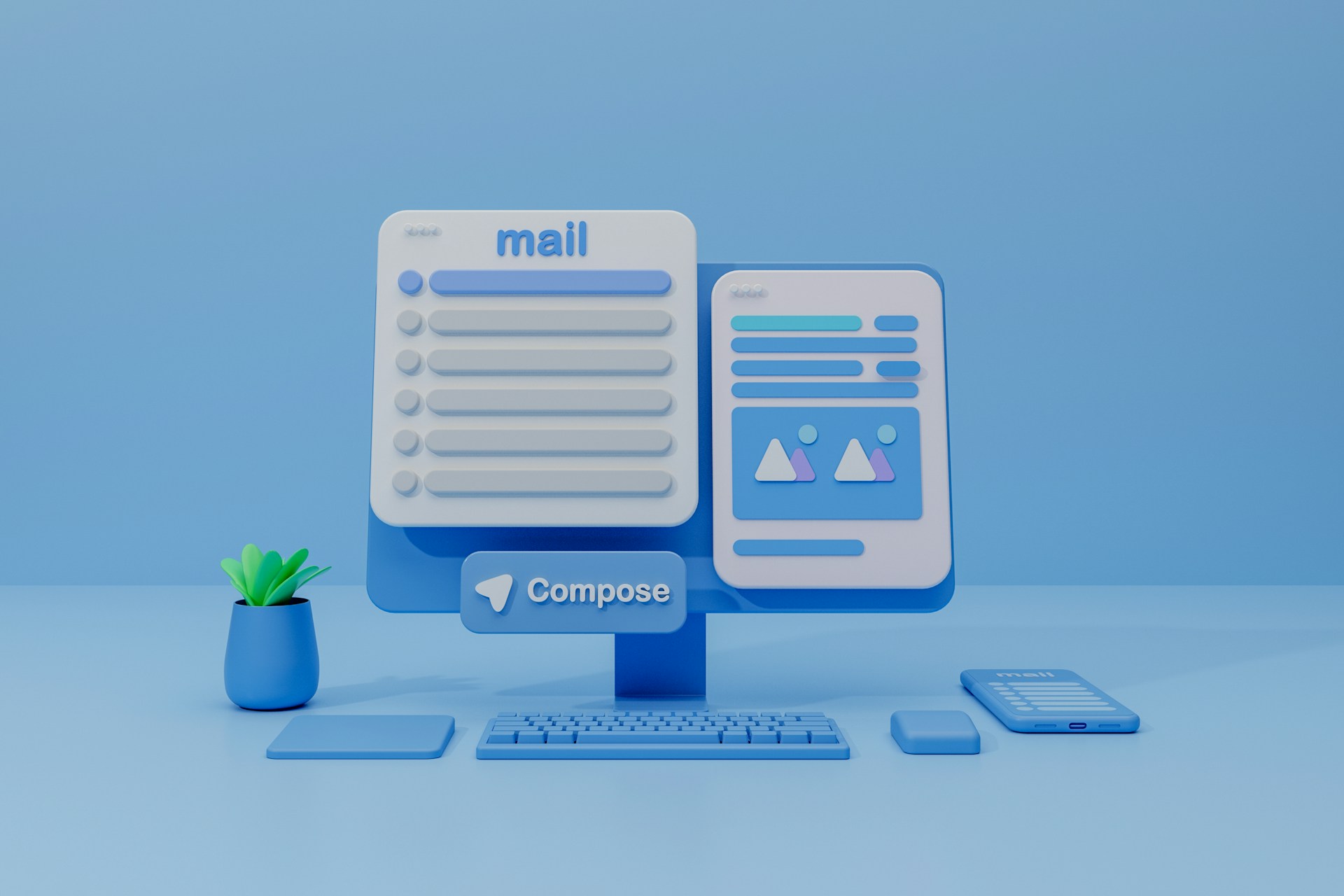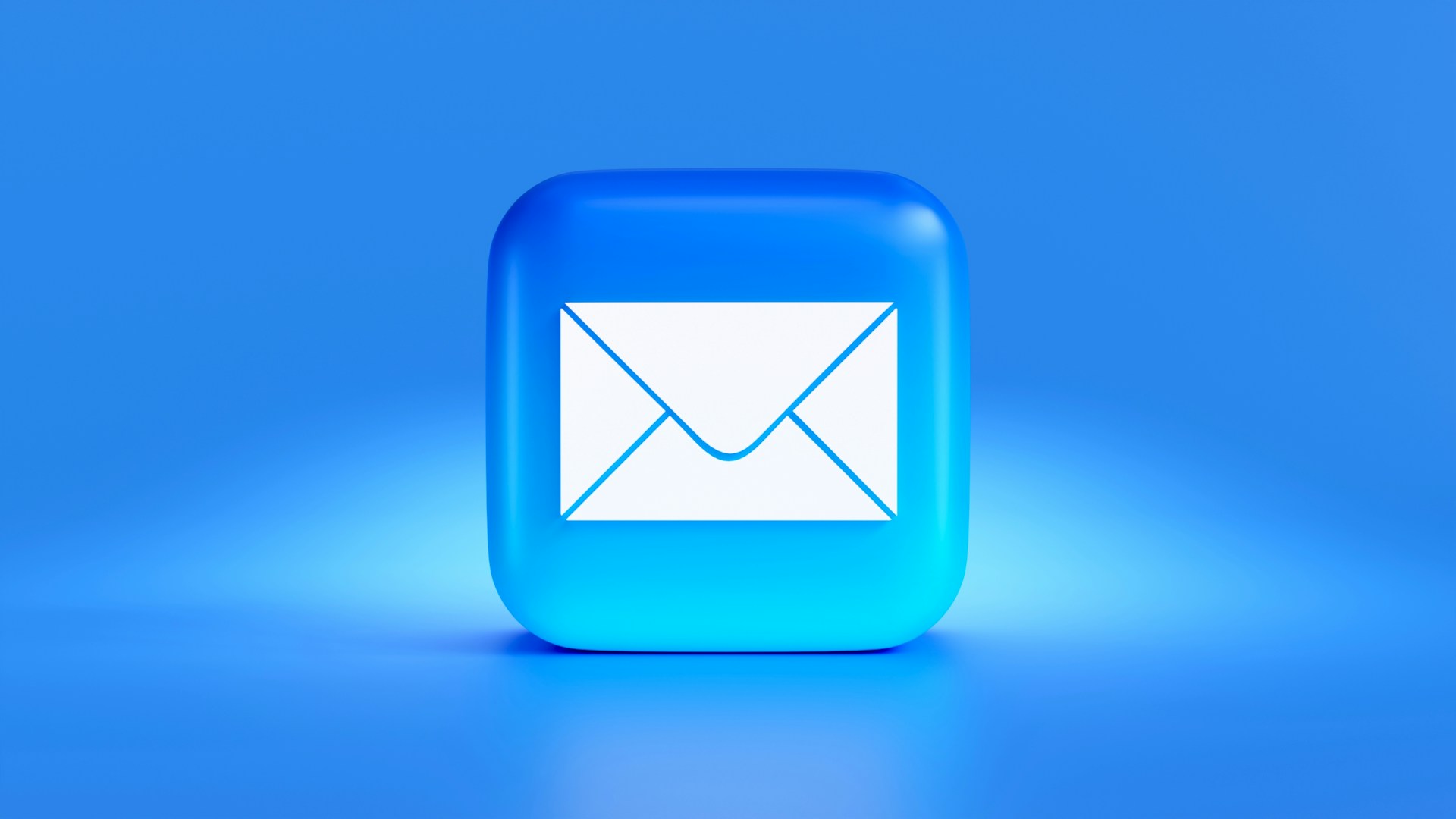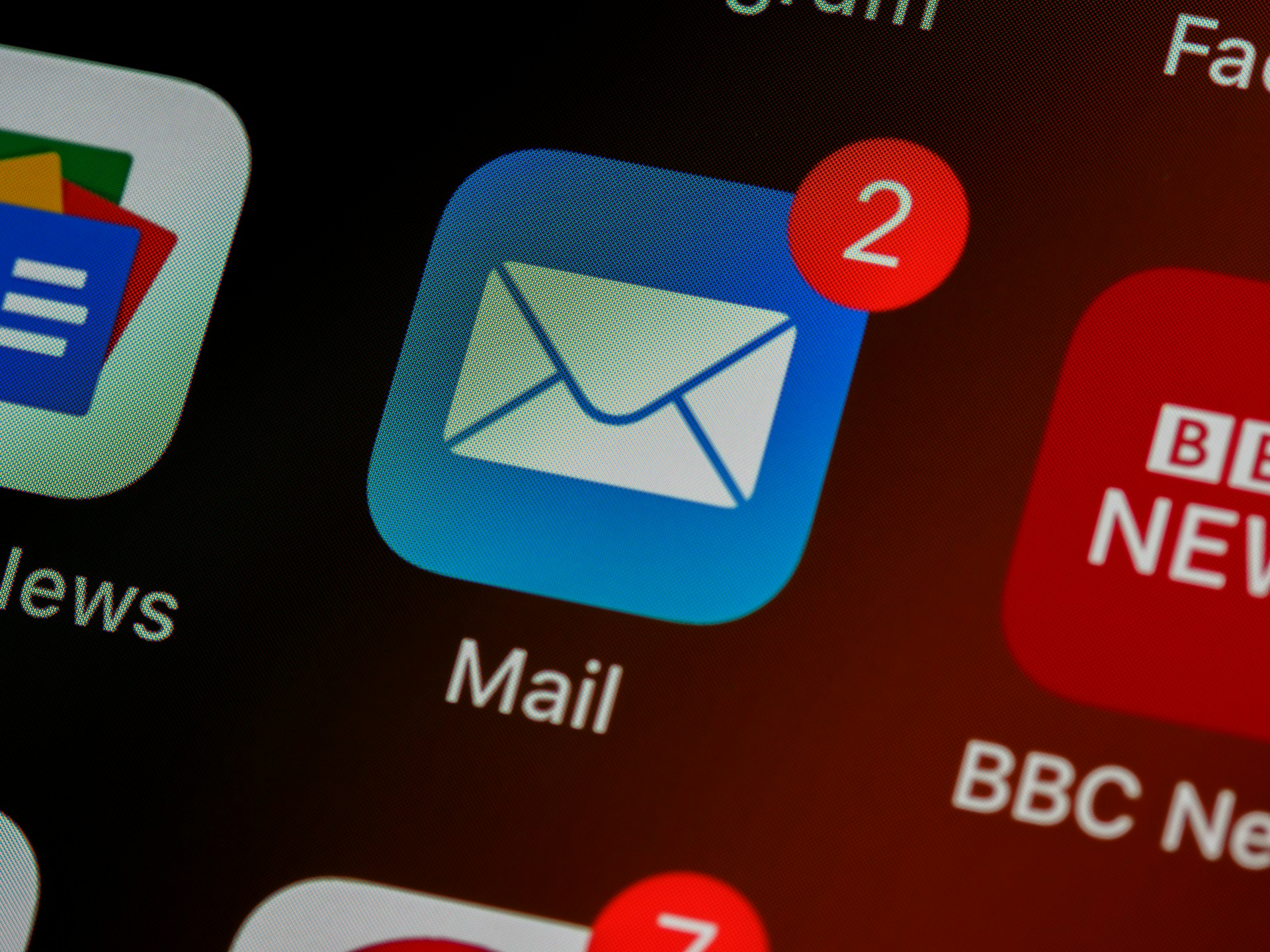How CRM Integration Boosts Email Campaigns
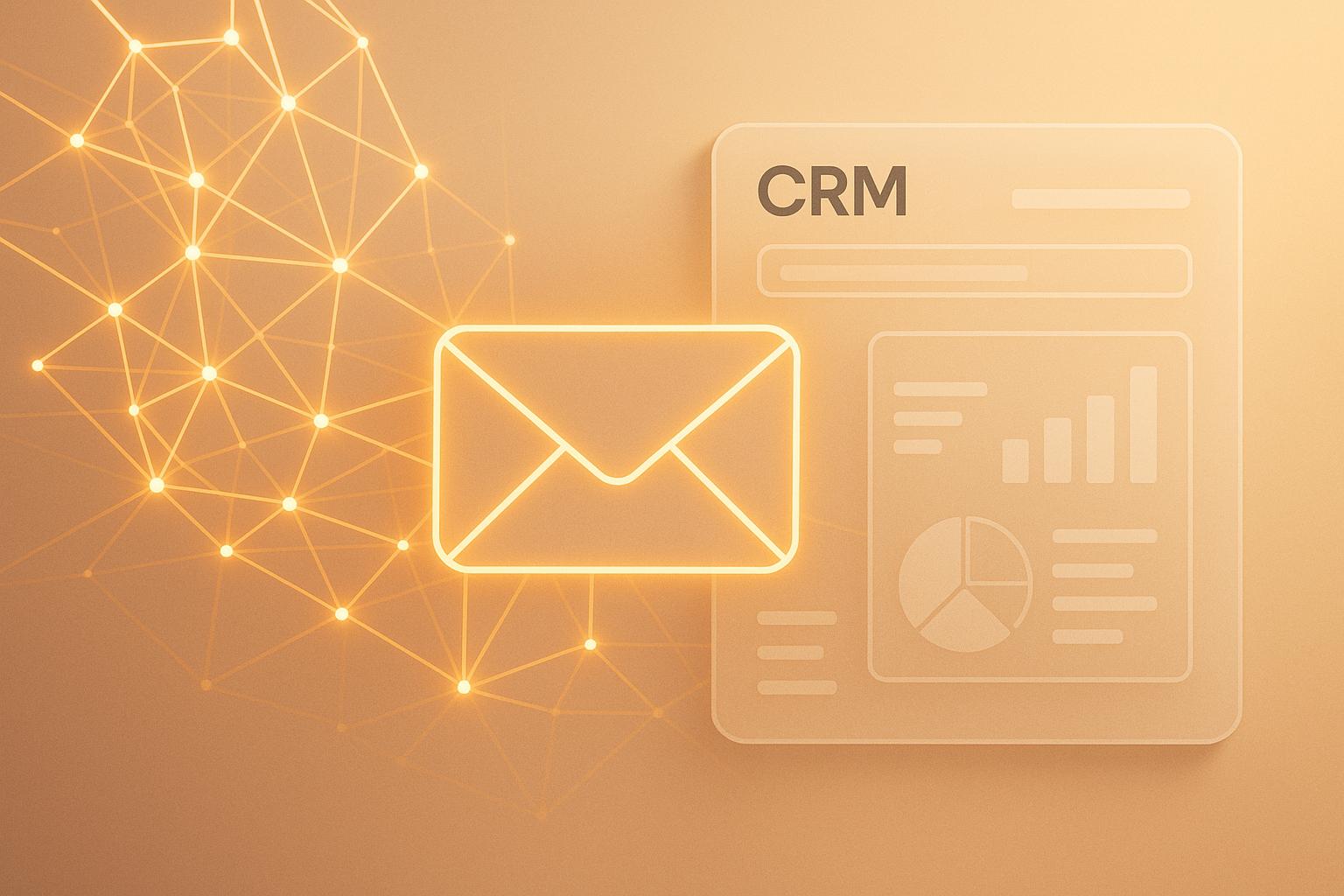
CRM integration transforms email marketing by centralizing customer data, enabling automation, and improving personalization. Here’s why it matters:
- Personalized Emails Drive Results: With CRM data, you can send tailored messages based on customer behavior, leading to a 320% revenue boost from automated emails compared to non-automated ones.
- Improved Efficiency: Real-time data syncing eliminates manual updates, ensuring marketing and sales teams work with accurate information. This streamlines workflows and enables timely follow-ups.
- Powerful Segmentation: CRM systems help segment audiences by purchase history, lifecycle stage, and engagement, allowing for targeted campaigns that resonate with specific groups.
- Actionable Analytics: Integrated systems provide insights into email performance, helping refine strategies and improve engagement.
For example, businesses using CRM integration report a 29% increase in sales and a 34% boost in productivity. Tools like Breaker enhance this process by integrating with CRMs to identify high-quality leads and optimize campaigns.
Key Takeaway: CRM integration simplifies email marketing, making campaigns more effective and data-driven. It’s not just about sending emails - it’s about delivering the right message at the right time to the right audience.
Why Should I Integrate CRM With My Email Marketing? - TheEmailToolbox.com
Key Benefits of CRM Integration in Email Marketing
Integrating your CRM with email marketing tools unlocks a range of advantages that reshape how you manage campaigns and engage with leads. These benefits work together to create more responsive and impactful marketing efforts.
Real-Time Data Synchronization
When your CRM and email marketing tools are connected, real-time updates ensure that every email interaction is instantly reflected in your CRM. This eliminates the need for manual data entry and reduces errors, allowing both marketing and sales teams to work with the most up-to-date information. This synchronization enables quick follow-ups while customer interest is still fresh. In fact, 81% of marketers report that automation improves workflow efficiency. With accurate, real-time data, customer profiles remain complete and current, streamlining your entire process.
Enhanced Personalization and Targeted Messaging
CRM integration transforms one-size-fits-all emails into highly targeted messages tailored to each recipient's preferences. By leveraging detailed customer profiles - such as purchase history, browsing behavior, support interactions, and engagement trends - you can create audience segments far beyond basic demographics.
For instance, a coffee subscription company expanded its customer base from 10 to 10,000 by using CRM-integrated email marketing. They sent automated renewal reminders based on individual subscription dates and personalized offers aligned with previous purchases. The impact of personalization is clear: 78% of consumers are more likely to buy from brands that deliver tailored experiences. With precise segmentation, your emails feel like meaningful conversations, not intrusive spam.
Automated Workflows for Every Stage of the Customer Journey
CRM-powered automation makes it easy to nurture leads throughout their lifecycle. Automated workflows can be triggered by specific actions or data points in your CRM, ensuring timely and relevant communication.
These workflows handle everything from onboarding new customers to upselling and re-engaging dormant leads. For example, automated emails - fueled by CRM data - drive 320% more revenue than non-automated emails and contribute to 41% of email-driven orders, despite making up just 2% of total emails sent. This precision ensures you're sending the right message to the right person at the perfect moment.
For B2B marketers, tools like Breaker simplify lead generation and audience targeting through CRM-driven automation. Whether it’s a welcome sequence for new subscribers or a re-engagement campaign for inactive leads, these workflows operate 24/7, delivering personalized experiences that guide prospects seamlessly through your sales funnel.
How CRM Integration Improves Personalization and Targeting
Let’s dive deeper into how integrating a CRM system can transform your marketing efforts, especially when it comes to personalization and targeting. By connecting your CRM with your marketing tools, you can turn generic emails into tailored messages that resonate with each recipient’s unique needs and interests.
Using CRM Data for Audience Segmentation
Your CRM is more than just a digital address book - it’s a treasure trove of data. It holds detailed customer profiles that include purchase history, website behavior, engagement metrics, demographics, and lifecycle stages. With this information, you can create precise audience segments that make your messaging far more relevant.
For example, you might segment customers based on where they are in their journey. A new lead who just downloaded a whitepaper likely needs introductory emails, while a loyal customer might be ready for an upsell offer. Behavioral data adds another layer of refinement. You can group customers who abandoned their carts, recently made a purchase, or haven’t engaged in months. Each segment receives messaging tailored to their specific situation, ensuring your communication feels timely and relevant.
Once your segments are in place, you can take the next step: automating email triggers to engage these groups effectively.
Setting Up Email Triggers Based on Customer Actions
CRM integration allows you to automate emails based on customer behaviors. These triggers ensure that your messages arrive at just the right moment - whether it’s after a purchase, a site visit, or reaching a subscription milestone.
Some common examples include:
- Welcome emails for new subscribers
- Abandoned cart reminders
- Post-purchase follow-ups
- Renewal notifications
- Re-engagement campaigns for inactive users
Timing is everything. For instance, in 2022, a SaaS company used CRM integration to send upsell emails as users approached their usage limits. This strategy boosted upsell conversions by 22% over six months. Emily McGuire, Senior Lifecycle Marketing Manager at Close, puts it best:
CRM should be the center of the customer journey, enabling mapping of behavior to lifecycle stages, triggering automated outreach, and measuring revenue impact from campaigns.
For B2B marketers, tools like Breaker take this further by integrating CRM data with automated lead generation and precise targeting. This ensures your newsletters are not only highly personalized but also reach the right audience with high deliverability rates.
Once you’ve set up triggers, the next step is customizing your content to make every email count.
Customizing Content and Offers for Targeted Subscribers
With your audience segmented and triggers in place, it’s time to focus on content. CRM data empowers you to personalize subject lines, product suggestions, and offers, making your messages feel more like one-on-one conversations.
For instance, purchase history can tell you a lot about customer preferences. A shopper who frequently buys premium products might respond well to high-end recommendations, while someone more price-conscious will likely appreciate discounts or value-driven offers. Similarly, tracking website activity can reveal what products or services a customer is eyeing, allowing you to craft emails that align perfectly with their interests.
Geographic and demographic insights can also shape your messaging. Seasonal promotions might vary depending on location - think winter coat campaigns targeting customers in Minnesota versus Florida. By tailoring your offers and language, you ensure your emails resonate with each recipient’s context.
When your emails feel personal and relevant, they don’t just land in inboxes - they spark conversations. This level of personalization drives higher engagement and conversions, turning mass communication into meaningful interactions.
sbb-itb-8889418
Improving Campaign Performance and Analytics
Integrating a CRM system transforms how businesses analyze and improve their campaign performance. By combining centralized analytics, real-time tracking, and automated lead scoring, you gain a clearer picture of the customer journey and actionable insights to refine your strategies.
Centralized Analytics for Customer Data
A CRM system links email metrics - like open rates, click-through rates, and conversions - directly to individual customer profiles. This integration creates a unified view of your email performance, enabling you to track how each customer interacts with your campaigns. For example, you might notice that customers who frequently click on product updates rarely make purchases. This insight could guide you to adjust your messaging or offer something more compelling. On the flip side, identifying high-value customers who engage consistently with specific content allows you to design more targeted campaigns for similar audiences.
By integrating data such as bounces, unsubscribes, and conversion rates into customer profiles, you can analyze engagement at both the individual and broader levels. This helps uncover opportunities for upselling or re-engaging customers. You can also use these insights to refine email timing and content, boosting renewal rates and overall engagement.
For B2B marketers, tools like Breaker provide real-time performance analytics that sync seamlessly with popular CRMs. This setup ensures that newsletter data feeds directly into customer profiles, creating a single, comprehensive record of interactions.
Real-Time Performance Tracking and Campaign Adjustments
Real-time analytics take campaign management to the next level by providing immediate insights into performance. Instead of waiting days or weeks for results, you can monitor how your campaigns are doing as they unfold. This instant feedback lets you quickly address underperforming elements, such as a weak subject line or low engagement in a specific segment. Adjustments like refining content, retargeting groups, or testing new subject lines can be made mid-campaign.
When a campaign isn't hitting its marks, real-time tracking allows you to pivot strategies on the fly rather than waiting for post-campaign analysis.
"CRM should be the center of the customer journey, enabling mapping of behavior to lifecycle stages, triggering automated outreach, and measuring revenue impact from campaigns".
This capability works hand in hand with earlier strategies like segmentation and personalization, ensuring your campaigns stay optimized from start to finish.
Automated Lead Scoring and Follow-Up Processes
CRM systems also automate lead scoring, using behavioral email data to prioritize leads based on their level of engagement. For example, if a lead clicks a product link and downloads a brochure, your CRM can automatically trigger a personalized follow-up email or assign the lead to a sales rep for direct outreach. This automation dramatically improves efficiency and conversion rates.
The process starts with defining lead scoring criteria - such as email opens, clicks, or website visits - and setting up automation rules within your CRM that sync with your email platform. Businesses using CRM systems have reported impressive results: a 29% increase in sales, a 34% boost in sales productivity, and a 42% improvement in sales forecast accuracy. Plus, 81% of marketers agree that CRM-driven automation streamlines workflows. Despite making up only 2% of emails sent, automated emails account for 41% of email orders, thanks to their precise timing and personalization.
Platforms like Breaker take this a step further by delivering pre-qualified leads directly into your CRM. Using advanced targeting and AI enrichment, Breaker identifies engaged B2B subscribers that match your ideal customer profile. This ensures that your follow-up efforts focus on the most promising prospects, making the lead scoring process even more efficient and effective.
Implementation Steps and Best Practices
To make the most of your CRM and email platform integration, follow these steps. The process involves technical setup, ensuring compliance, and fine-tuning strategies to get the best results from your campaigns.
Steps for Connecting CRM with Email Platforms
Start by choosing platforms that work well together. For example, Breaker offers integrations with popular CRM tools, helping you move leads efficiently through your sales funnel. While Breaker itself isn’t a CRM, it works as a powerful lead generation and nurturing tool, complementing your existing system.
Next, focus on data mapping. For effective personalization and segmentation, match critical customer details - like contact info, purchase history, and engagement metrics - from your CRM to corresponding fields in your email platform.
Decide on how often your data syncs. Real-time synchronization is ideal for businesses with frequent customer interactions, while daily updates work better for companies with longer sales cycles.
Before launching, test everything thoroughly. This includes sending trial emails to segmented lists, checking data accuracy across both systems, monitoring automated workflows (like triggered emails), and ensuring unsubscribe requests sync correctly. Make sure duplicate entries are eliminated, and all processes run smoothly.
Finally, verify that your setup complies with US data privacy laws.
Following US Data Privacy Standards
After integrating your systems, ensure they meet US data privacy regulations. The CAN-SPAM Act requires clear opt-out options, accurate sender information, and honest subject lines. Make sure unsubscribe requests are processed immediately across both platforms.
Using a double opt-in process adds another layer of security. It helps confirm genuine interest and reduces spam complaints, improving the quality of your email list.
Breaker also integrates compliance and data hygiene into its lead-finding process, helping you identify subscribers who meet privacy standards. Beyond that, managing suppression lists - where your CRM automatically syncs and audits these lists - helps avoid compliance issues.
To protect your sender reputation, implement email authentication protocols like SPF, DKIM, and DMARC. These verify that your emails come from legitimate sources, improving deliverability. Breaker actively monitors sender reputation and manages mail streams to ensure your emails reach inboxes consistently.
Best Practices for Maximizing Integration Results
A successful integration doesn’t just connect systems - it enhances your ability to target and automate effectively. Start by using CRM data to define your ideal customer profile and segment your audience. Breaker’s algorithm can deliver highly engaged, B2B subscribers by leveraging detailed customer insights.
For US-based audiences, adjust your formatting to match local preferences. Use MM/DD/YYYY for dates, $1,234.56 for currency, and imperial units like inches and pounds where applicable. These small details can make your emails feel more relevant and relatable.
Automation is another key to success. Map out customer journeys and use lifecycle-based triggers to nurture leads through the funnel. Automated emails can drive up to 320% more revenue than manual campaigns.
Maintaining a clean email list is essential. Avoid using co-registration networks, as they often provide poorly targeted leads that can harm your deliverability and compliance. Instead, focus on organic methods to attract genuinely interested prospects.
Finally, monitor and refine your campaigns continuously. Breaker offers real-time insights to help optimize both individual email sends and broader strategies. Use this data to spot underperforming segments, test new ideas, and fine-tune your targeting.
To keep everything running smoothly, schedule regular audits of your data and sync performance. Update field mappings as needed to align with your evolving business requirements. This proactive maintenance will help sustain the high performance of your CRM and email integration over time.
Conclusion: Getting the Most from CRM-Integrated Email Campaigns
Integrating your CRM with email marketing tools brings precision and efficiency to your campaigns. Data consistently shows that automated, integrated campaigns outperform manual efforts, driving higher revenue and streamlining workflows.
To recap the main benefits, CRM integration offers three standout advantages. First, it centralizes customer data, enabling highly targeted and personalized messaging that resonates with specific audience groups. Second, it simplifies workflows by automating key steps in the customer journey, from welcome emails to post-purchase follow-ups. Third, it provides real-time analytics, allowing you to tweak and refine campaigns on the fly for better results.
For B2B marketers, tools like Breaker excel at automating lead generation and refining audience targeting. According to Breaker, their integrations help push leads further down the sales funnel by focusing on high-quality prospects that align with your ideal customer profile. Their algorithm uses custom targeting, AI data enrichment, and proprietary sources to deliver engaged B2B subscribers directly into your system.
To ensure your campaigns perform at their best, focus on maintaining data quality and compliance. Regularly audit your CRM, map fields accurately, and adhere to US privacy laws. With 78% of consumers more likely to buy from brands offering personalized experiences, keeping your data synced and accurate is non-negotiable.
Ultimately, success with CRM-integrated email campaigns isn’t just about linking systems - it’s about crafting a seamless customer experience. This approach not only drives measurable growth but also lays the foundation for scalable, automated marketing that enhances every interaction with your audience.
FAQs
How does integrating a CRM improve email campaign personalization?
Integrating a CRM with your email marketing tools gives you the power to use detailed customer data to create more personalized campaigns. With access to insights like demographics, purchase history, and user behavior, you can organize your audience into specific segments and send messages that align with their unique interests.
This kind of personalization strengthens the bond with your subscribers, boosts engagement, and makes conversions more likely. Instead of coming across as generic or impersonal, your emails will feel relevant and specifically crafted for each recipient.
What challenges do businesses face when integrating CRM systems with email marketing tools, and how can they solve them?
Integrating CRM systems with email marketing tools isn't always smooth sailing. Common challenges include data synchronization hiccups, inconsistent or messy data, and the struggle to align different platforms. These issues can throw off campaign performance and make lead tracking more complicated than it needs to be.
To tackle these obstacles, businesses should start with thoughtful planning during the integration phase. This means ensuring that data is clean, accurate, and consistent across all systems involved. Picking tools that offer robust integration options can also make the process much easier and help minimize errors.
For example, platforms like Breaker are built to streamline integrations. They connect effortlessly with popular CRMs, enabling businesses to automate lead generation, fine-tune audience targeting, and achieve better results from their campaigns.
How can companies ensure their CRM-integrated email marketing complies with US data privacy laws?
To align with US data privacy laws while using CRM-integrated email marketing, it's essential to prioritize clear consent from subscribers before sending any emails. Make sure your privacy policy is straightforward, easily accessible, and clearly outlines how customer data will be handled. Also, always include a simple and visible option for recipients to unsubscribe from communications.
Beyond that, safeguard sensitive information by adopting robust data security measures. Regularly review and update your practices to keep pace with changing regulations. Taking these steps not only helps you stay compliant but also strengthens customer trust.


